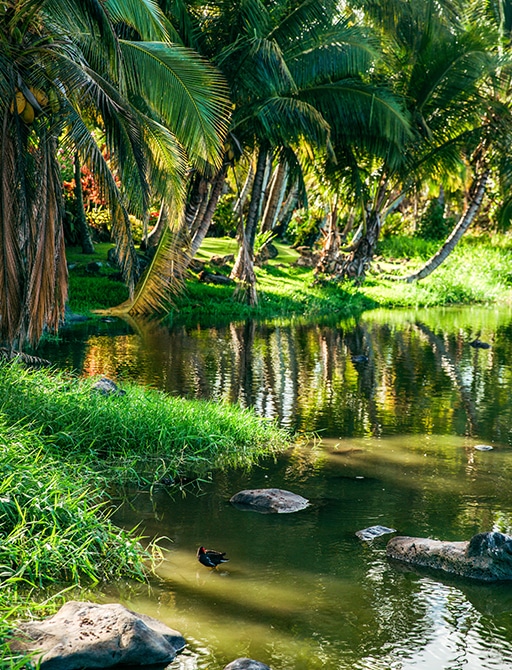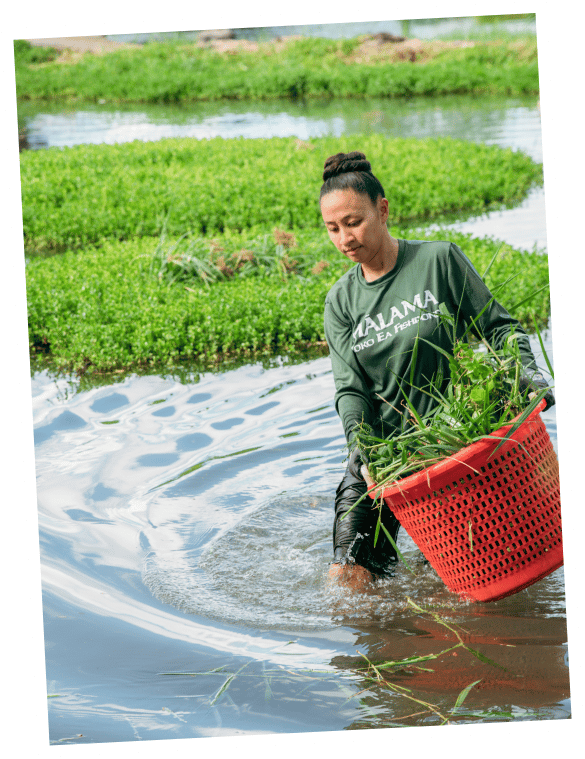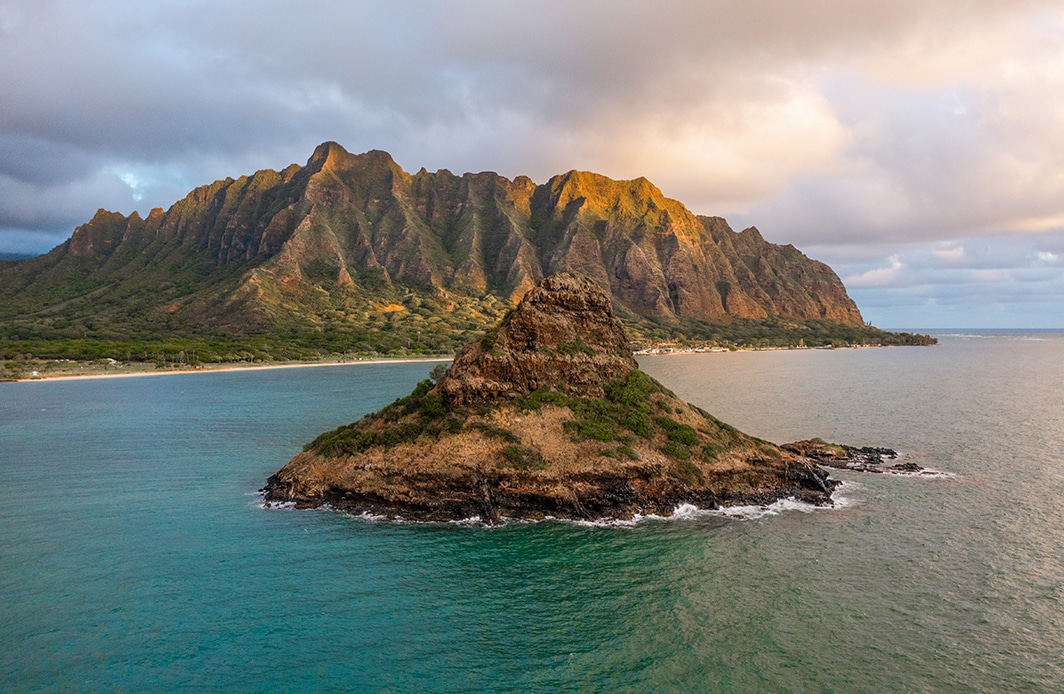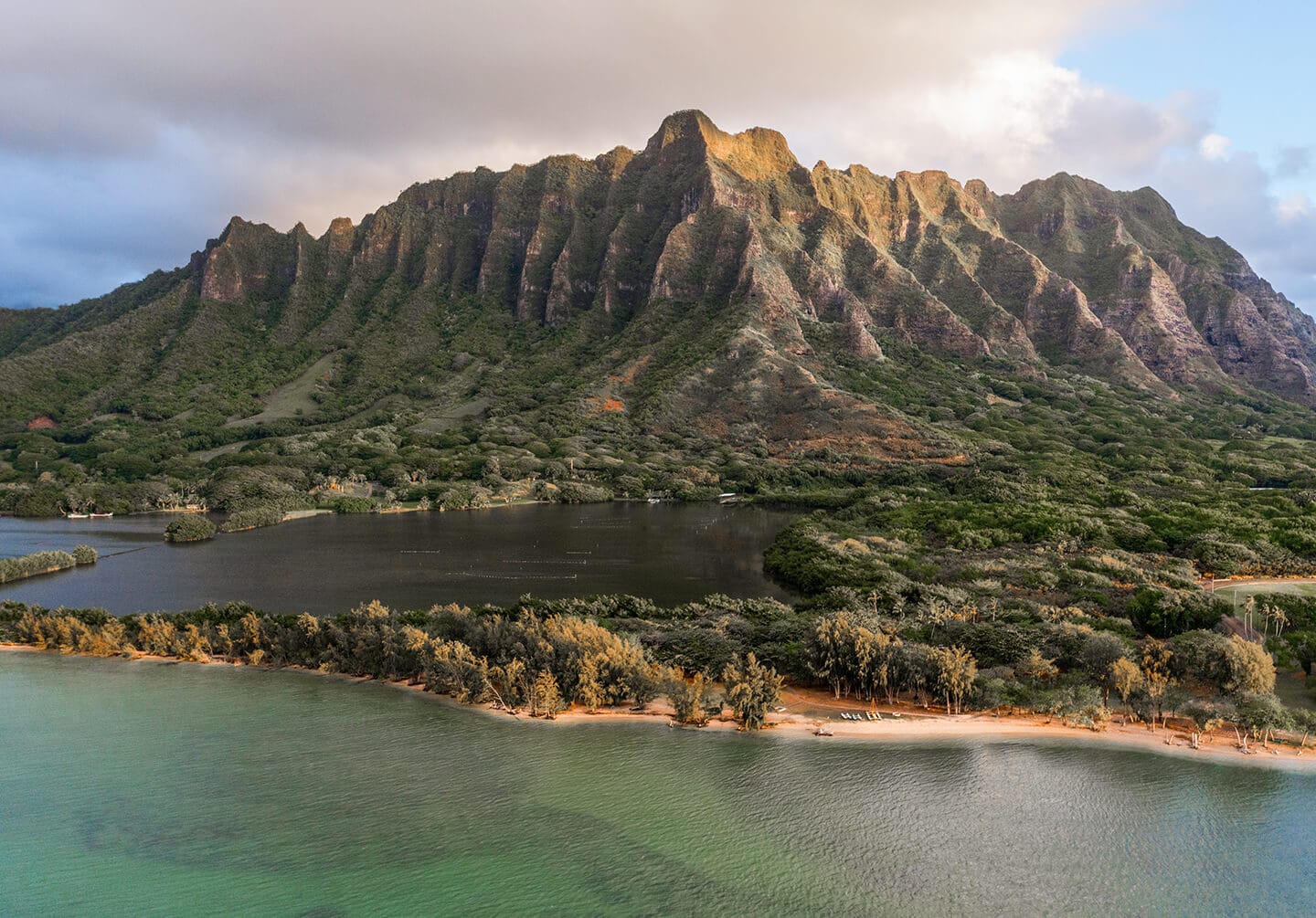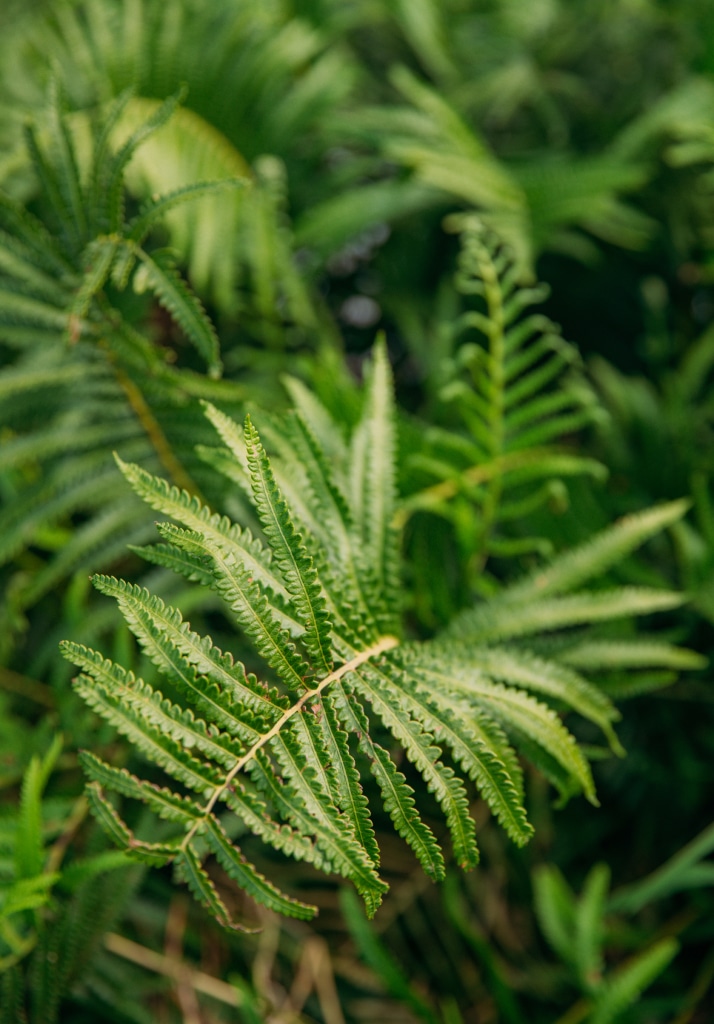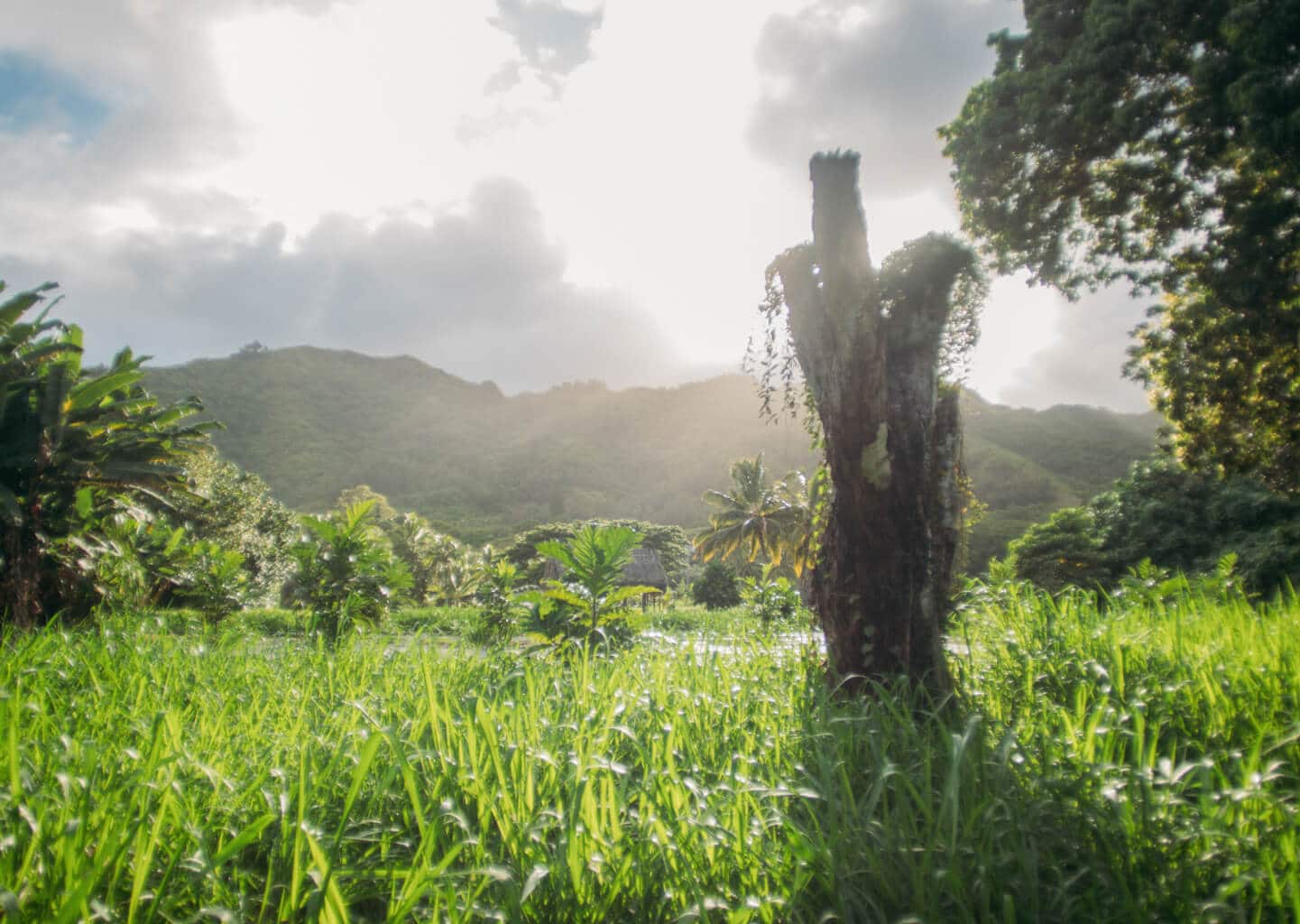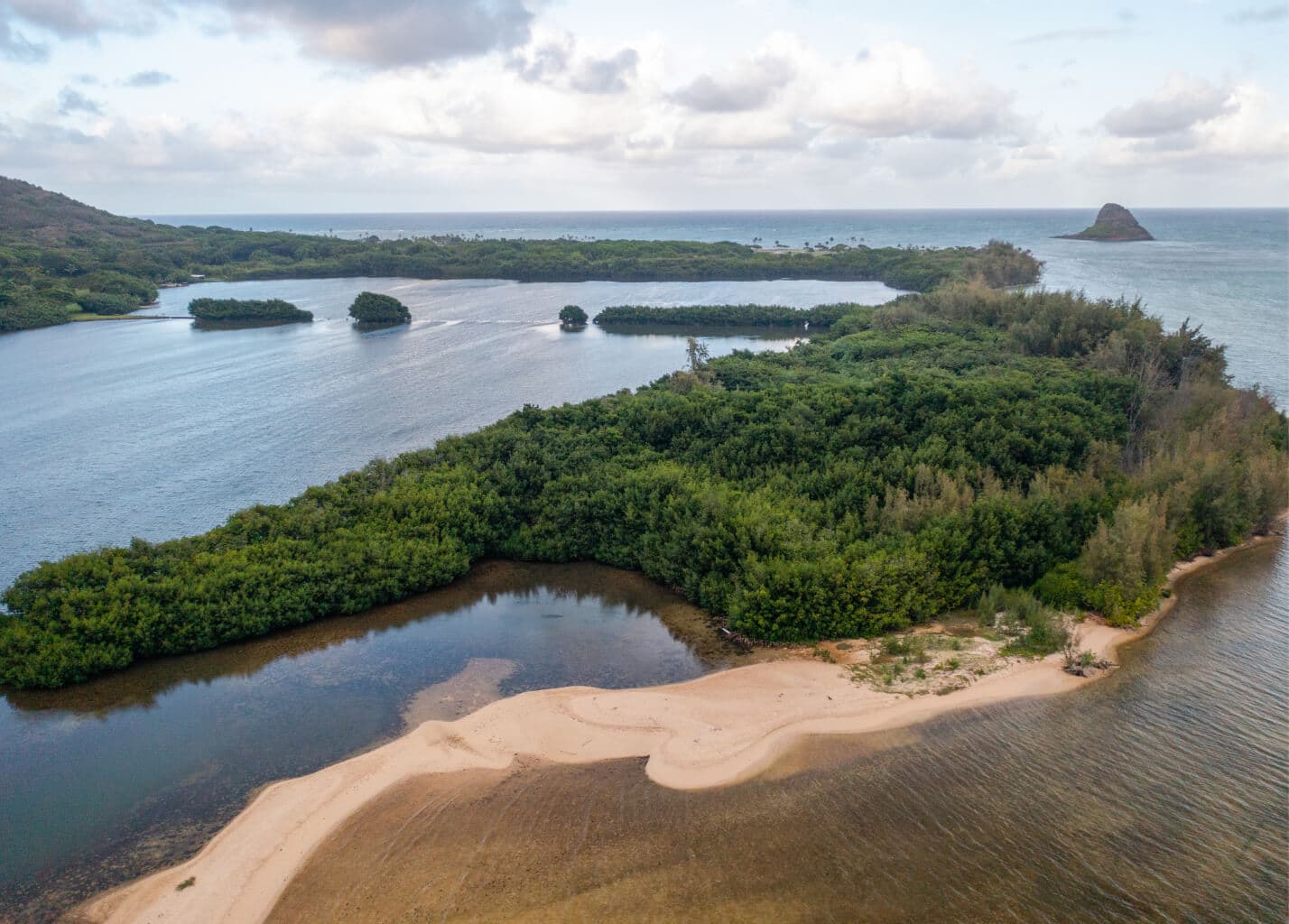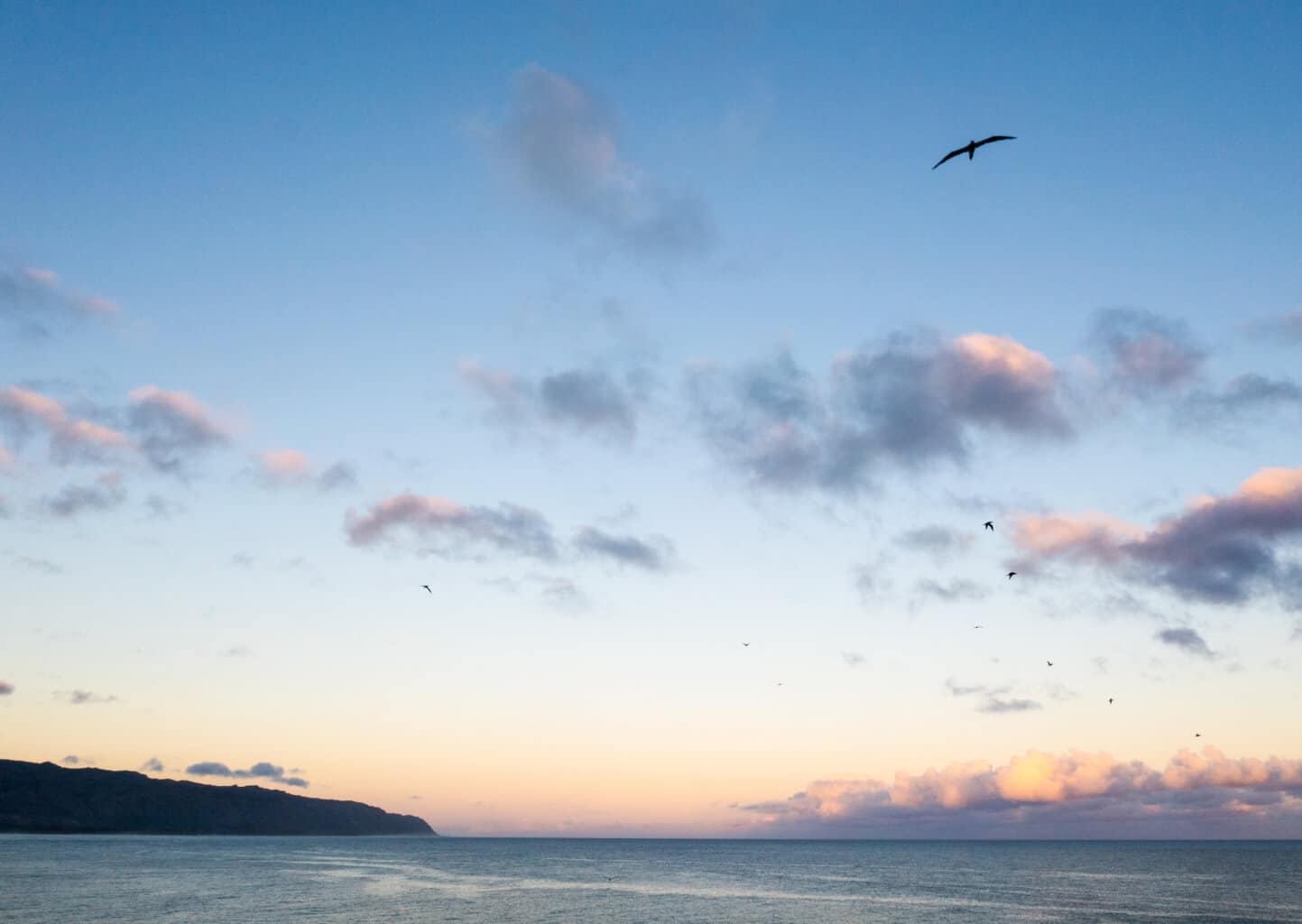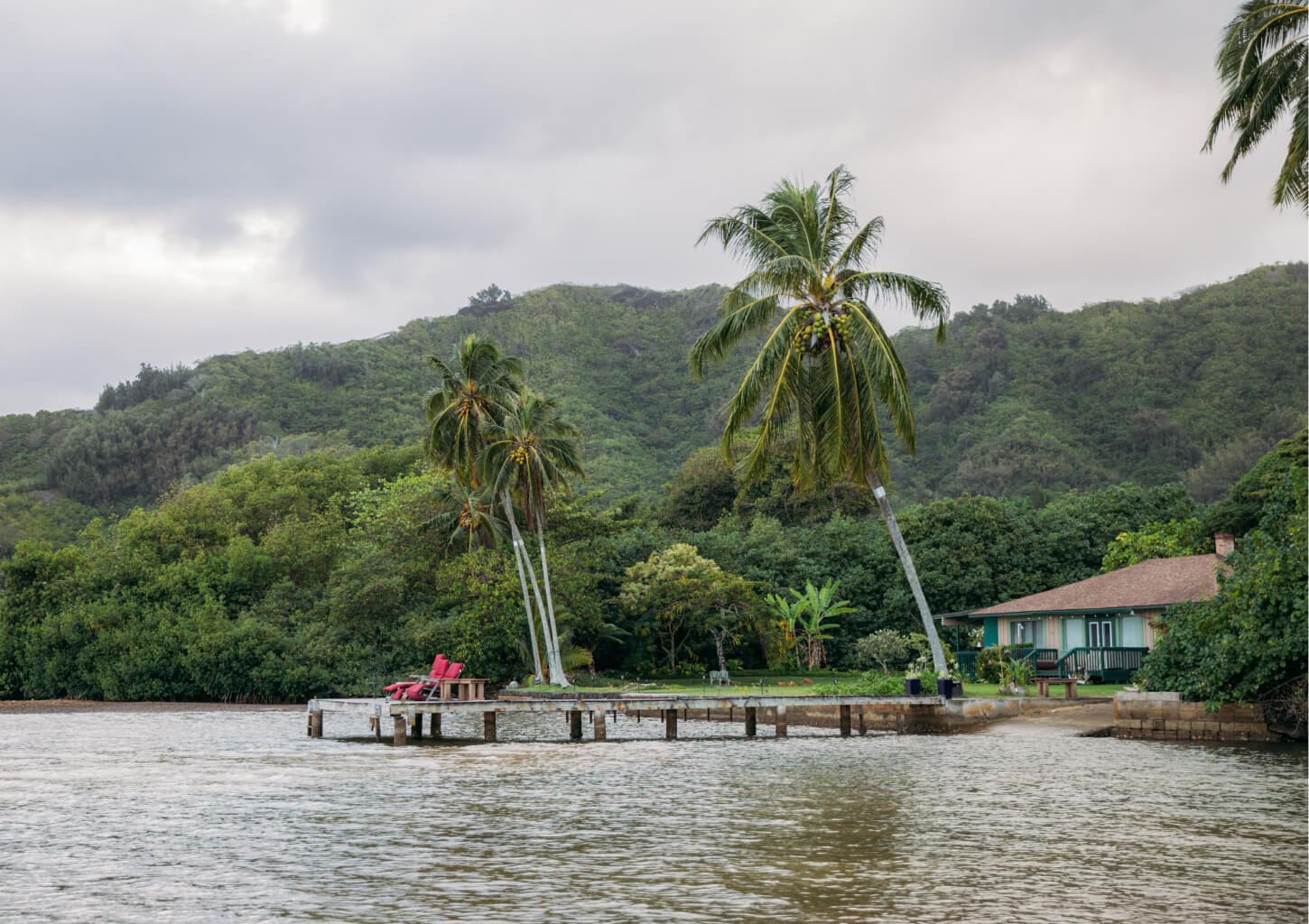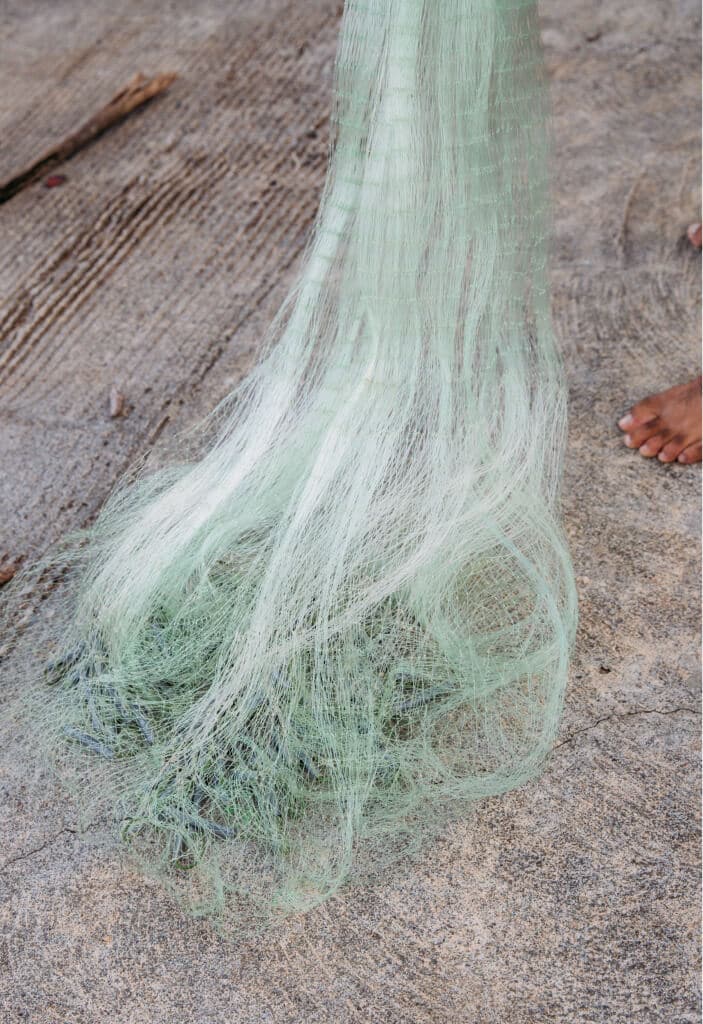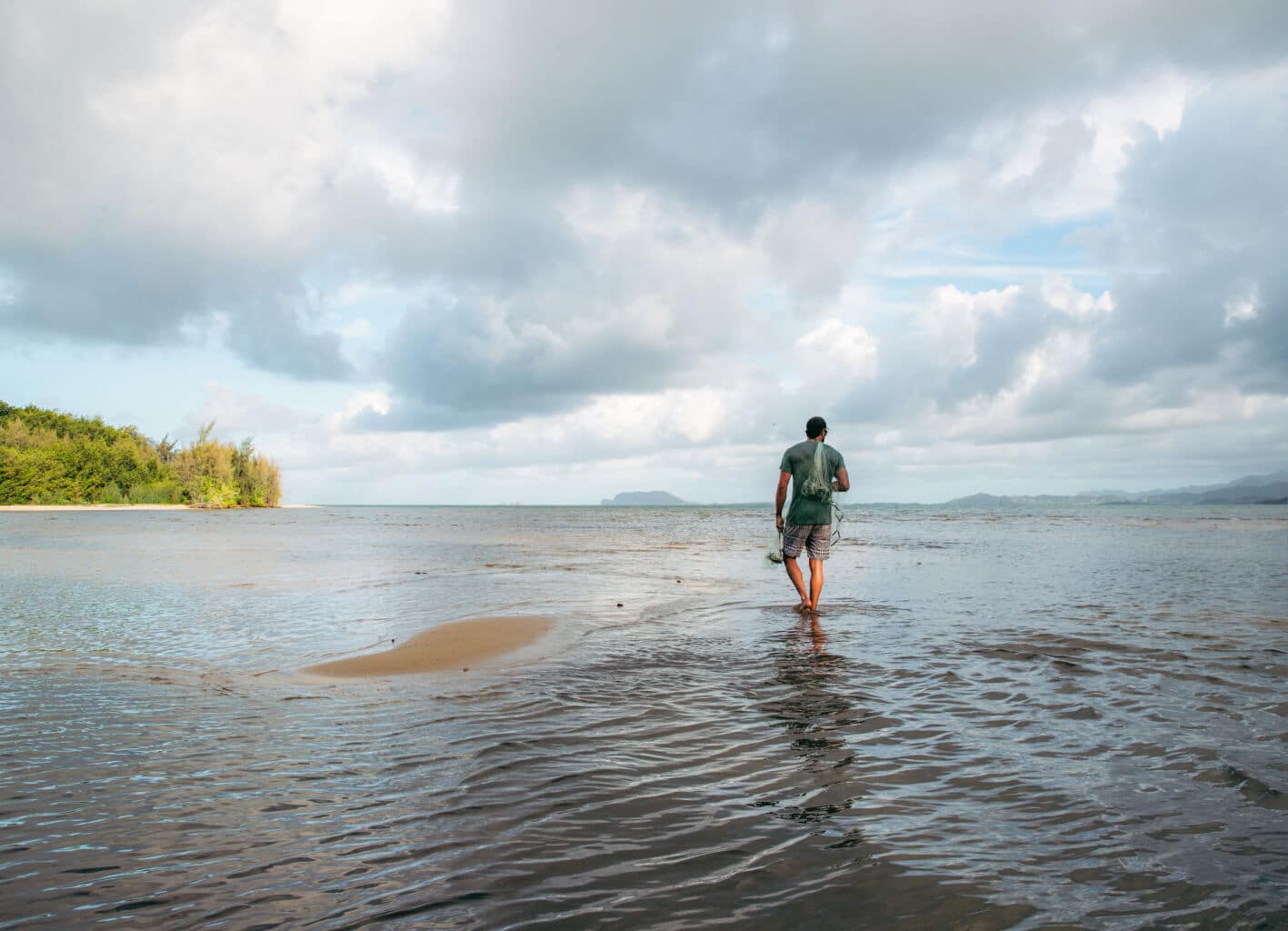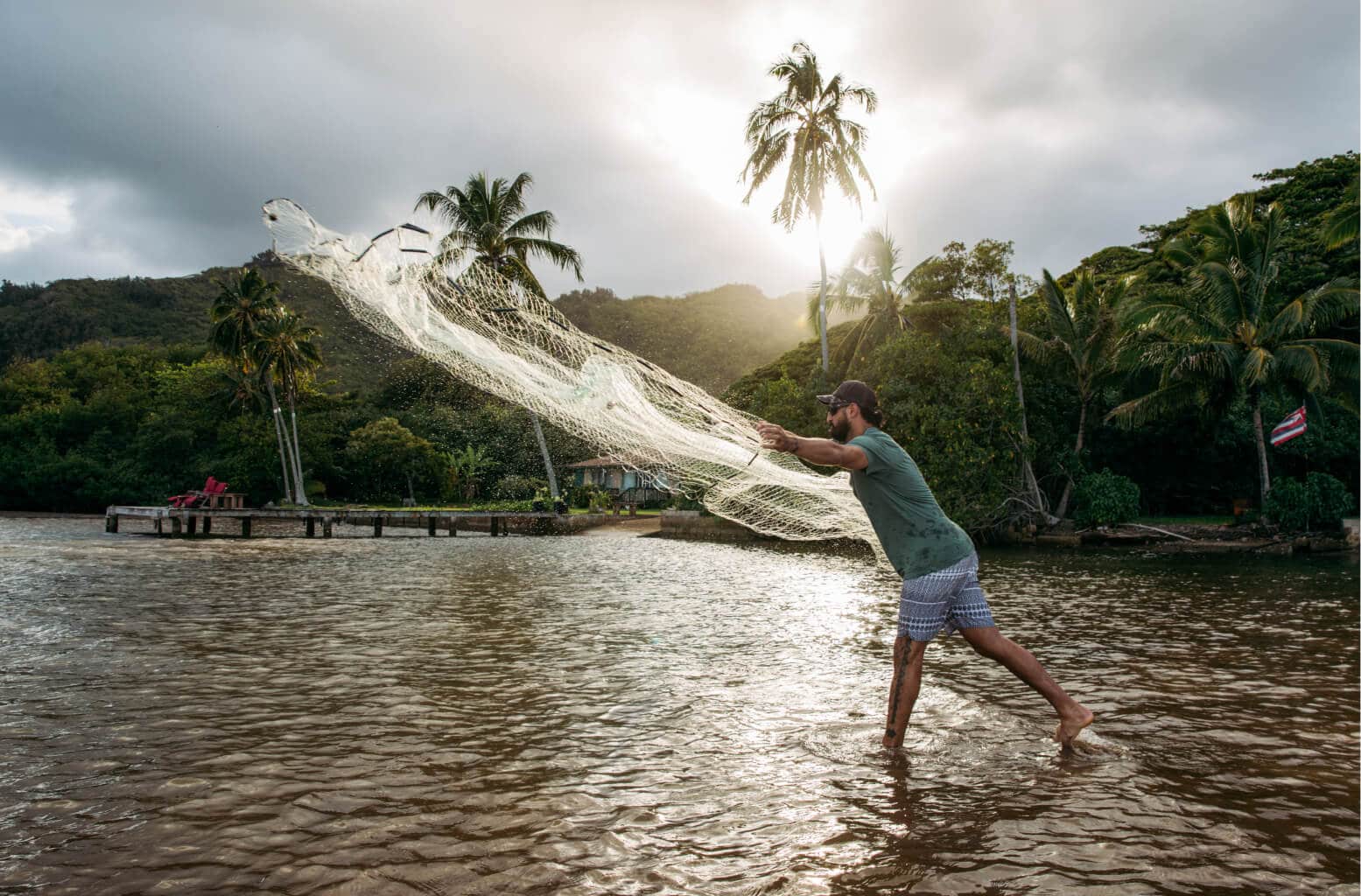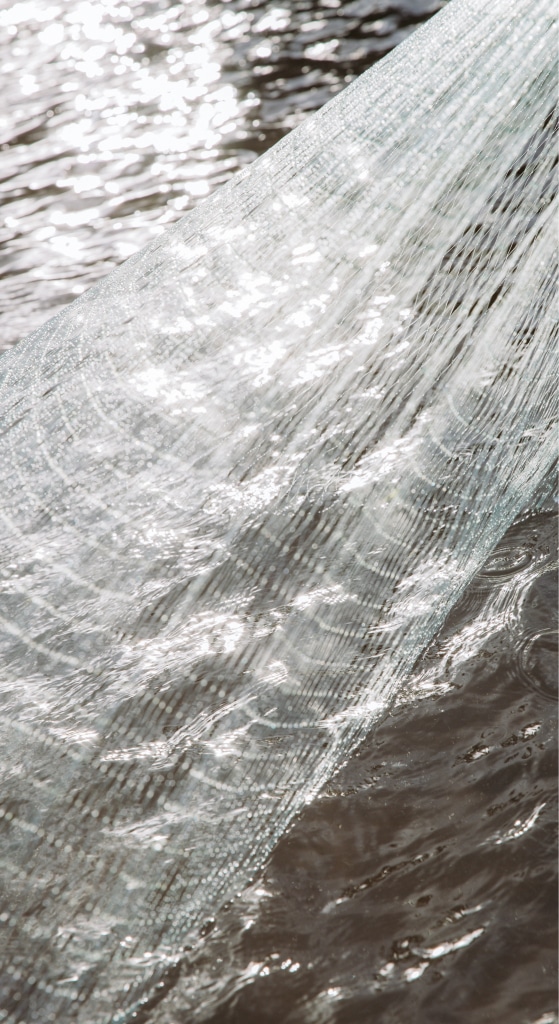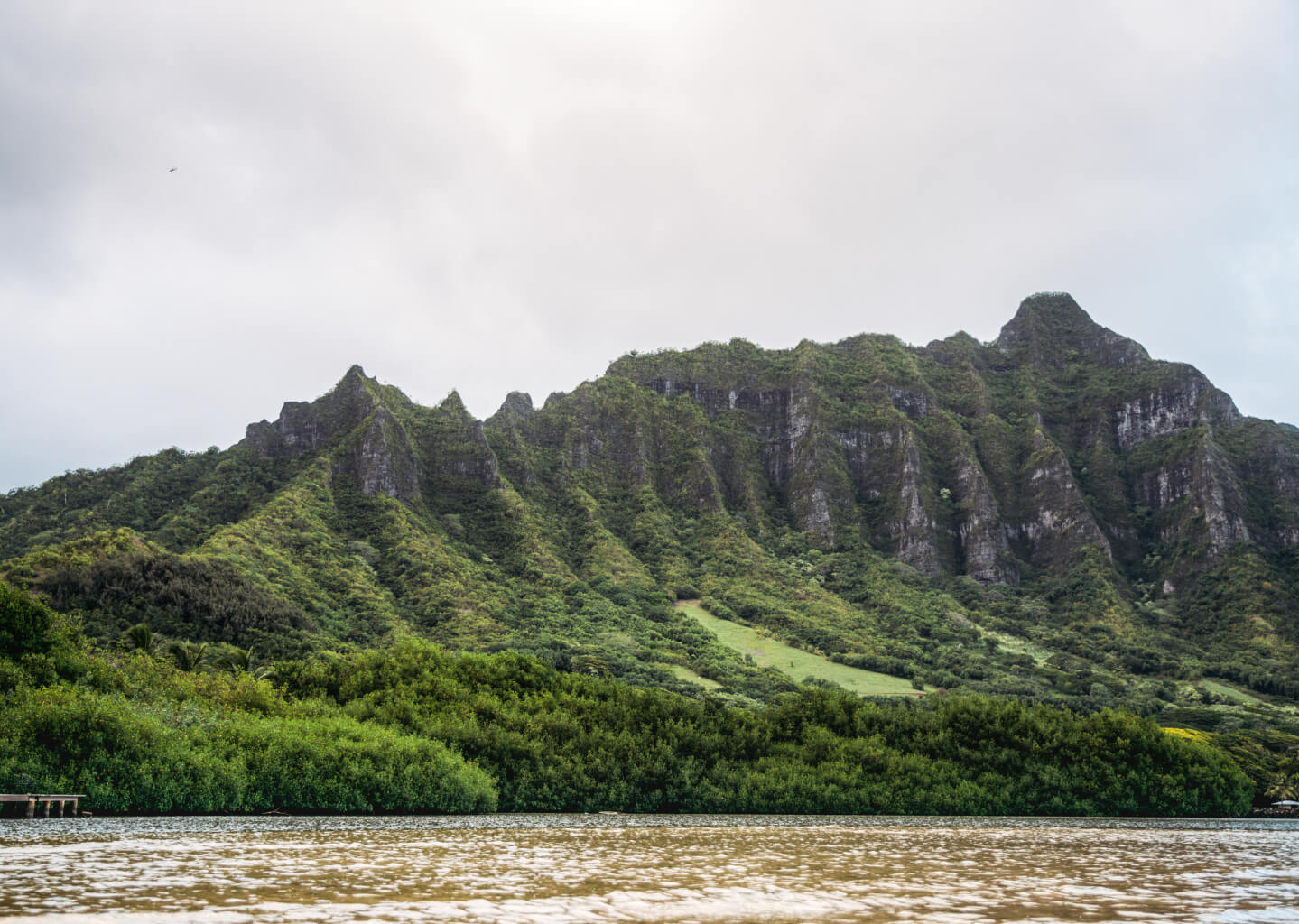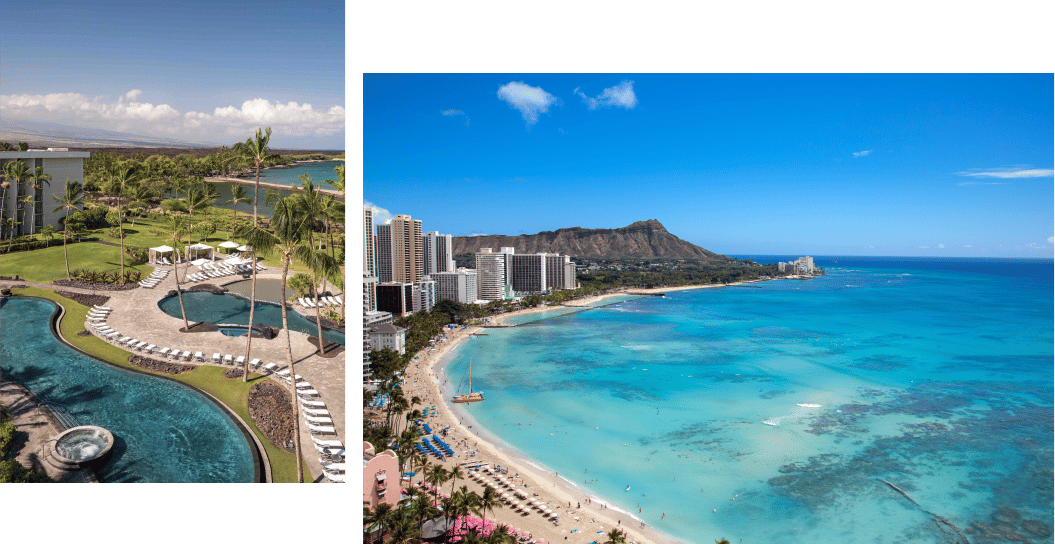How to Travel Better
Reverence & Restoration
How Hawaiian Fishpond Restoration
Educates and Heals
Jade Snow
Hawaiʻi
The summer sun sits high above the horizon line in early July, casting shadows that stretch like twisted arms across the sands of a fishpond on the Hawaiian island of Oʻahu.
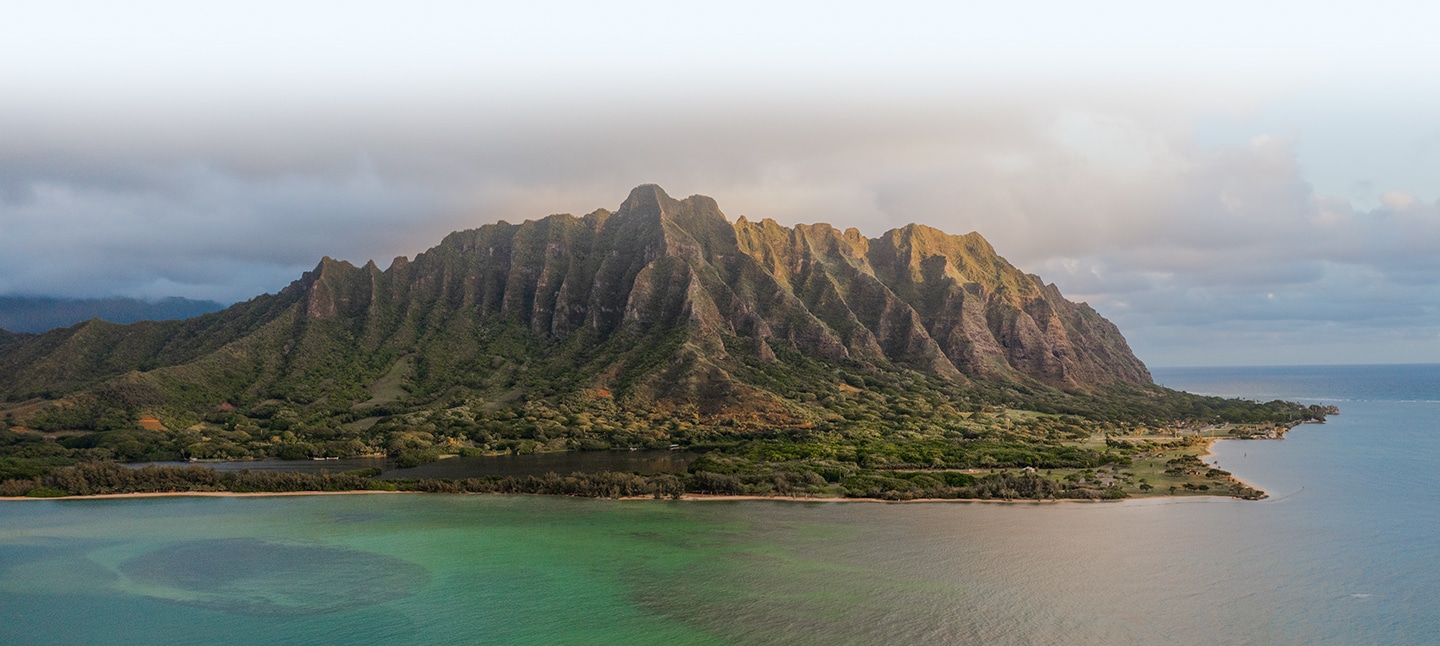

Beads of sweat draw quickly upon the brow of every man, woman and keiki (child) standing knee-deep in the water, all united in their task of pulling invasive mangrove trees from the ocean floor. The scene feels primeval — determined eyes focus their gaze on the work of restoring a natural habitat.
Each invasive species removed marks the progress of restoration efforts aiming to revive traditional Hawaiian loko iʻa (fishponds) to their former glory as treasured food sources for the local community. The effort is one of many to restore environmental balance here and is merely the first stage of an arduous process to give indigenous plants and animals a greater chance of surviving.

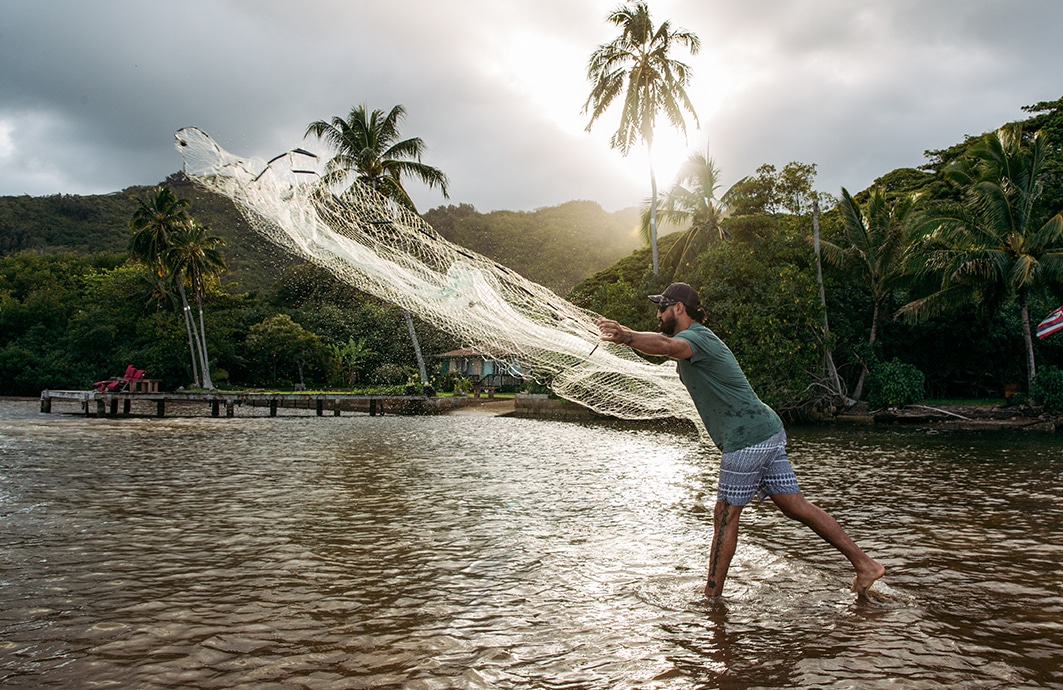

The very act reflects a symbiotic relationship between man, nature and spirit akin to ancient Hawaiʻi — a state whose future may well depend upon restoring balance to these foundations. Few understand this better than the stewards of loko iʻa .
Mālama Hawaiʻi
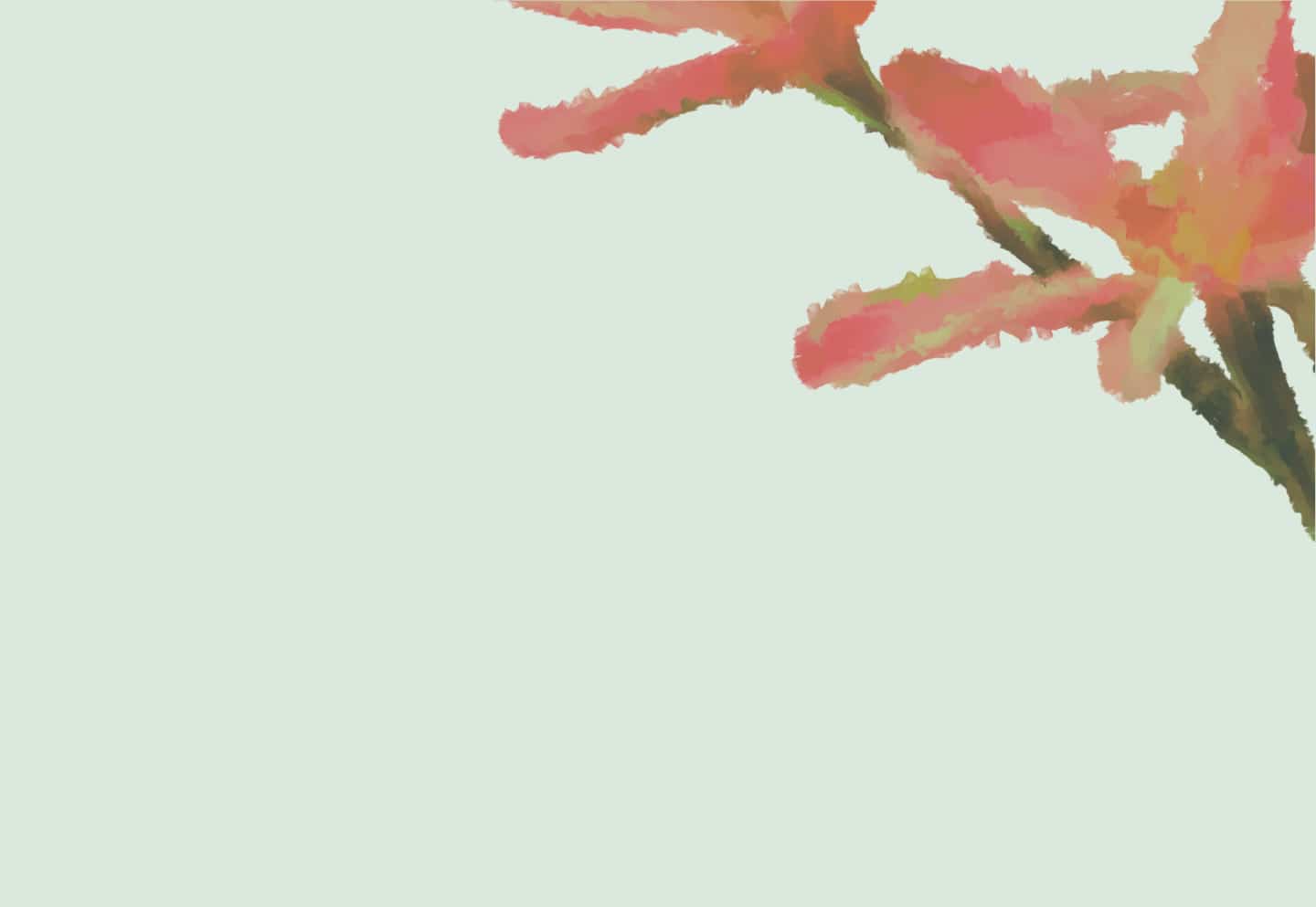
MĀLAMA HAWAI’I

Fishponds are among the many community organizations participating in the Hawaiʻi Tourism Authority and the Hawaiʻi Visitors and Convention Bureau’s new Mālama Hawaiʻi program, promoting cultural education and incentivizing volunteer opportunities for visitors to understand their kuleana (responsibility) to this sacred place.

Loosely translated from the Hawaiian language (ʻōlelo Hawaiʻi), Mālama Hawaiʻi means “to care for or give back to Hawaiʻi” — appropriate given the intent of its mission. The program’s goal is simple: to immerse visitors in the local community, provide volunteer opportunities to give back to those communities, and foster greater respect for Hawaiʻi through cultural education. Land-based restoration work is now commonplace among the many participating partner organizations, which is a testament to the importance of these programs. “One Hawaiian value that is displayed through this work is laulima, or many hands working together.
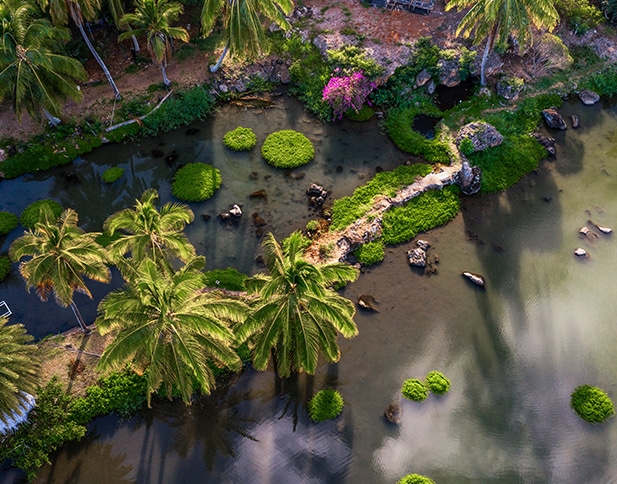
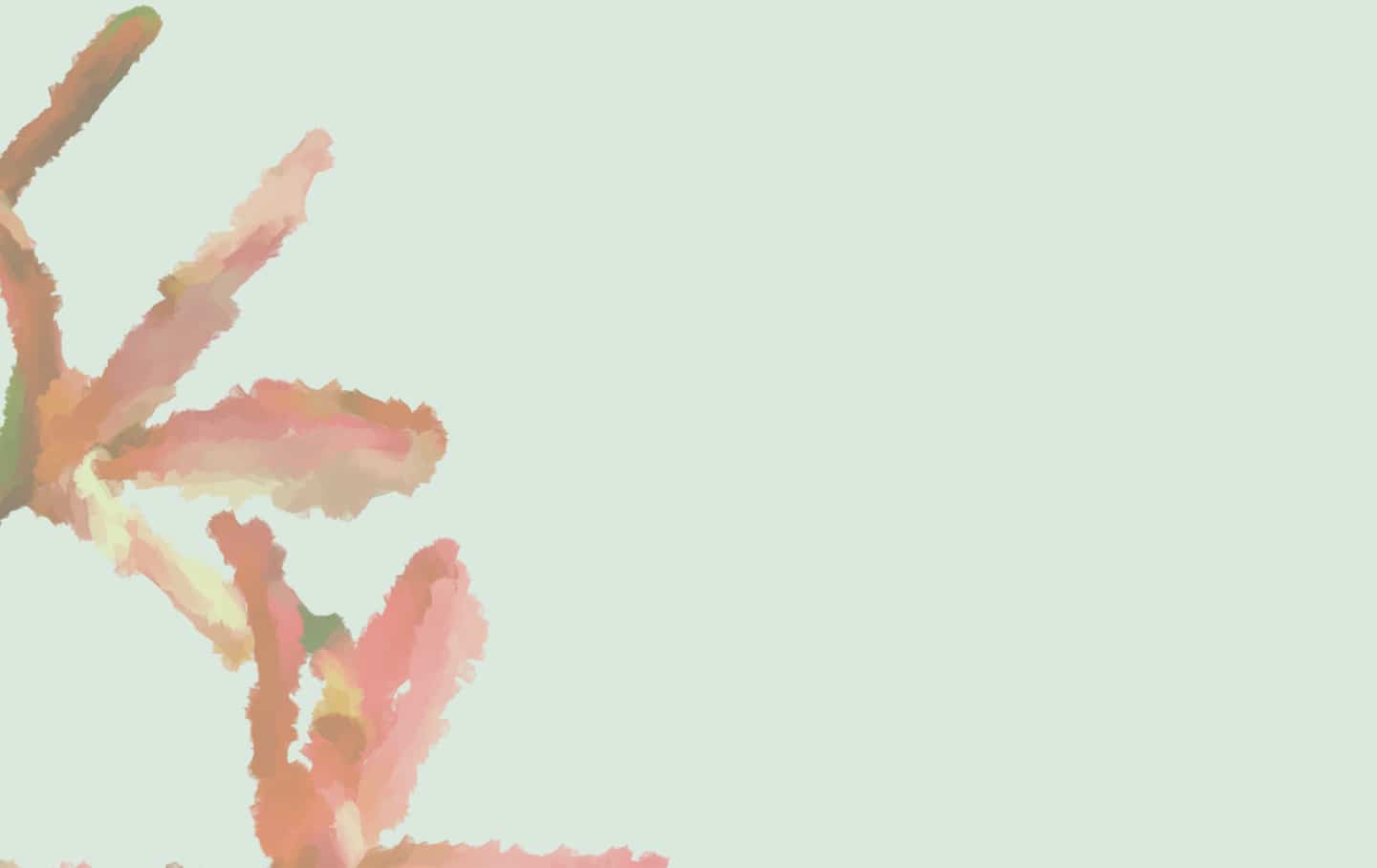
“For those who visit to do the necessary work to keep Hawaiʻi thriving, they invest their energy into something that is bigger than us as humans — they have contributed to encouraging Hawaiʻi’s environment and species to thrive,” says Joey Kalanakilaokalāhui Palupe, a Hawaiian sustainability kumu (teacher) at Kamehameha Schools. Industry partners and community organizations throughout the state signed on to answer Mālama Hawaiʻi’s call to action, acknowledging the positive impact these shared experiences could provide.
On Oʻahu, Sheraton Waikiki partnered with the Hawaiian Legacy Reforestation Initiative. On Maui, Wailea Beach Resort provides Hawaiian quilting courses to craft blankets that are donated to kūpuna (elders) or those in need. And on Hawaiʻi Island, the Waikoloa Beach Marriott Resort & Spa leads guided cleanups on neighboring beaches and cultural sites. The movement marks an urgent and necessary shift for the state’s tourism industry after the reckoning sparked by the COVID-19 pandemic.
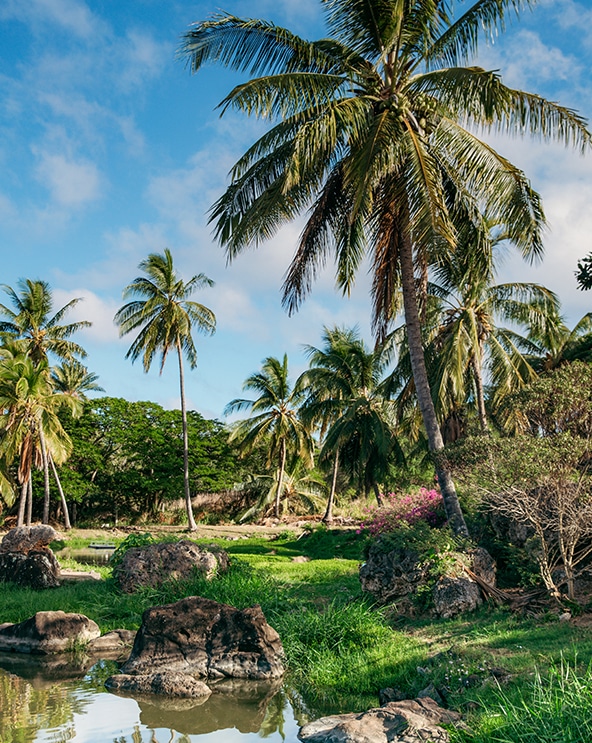

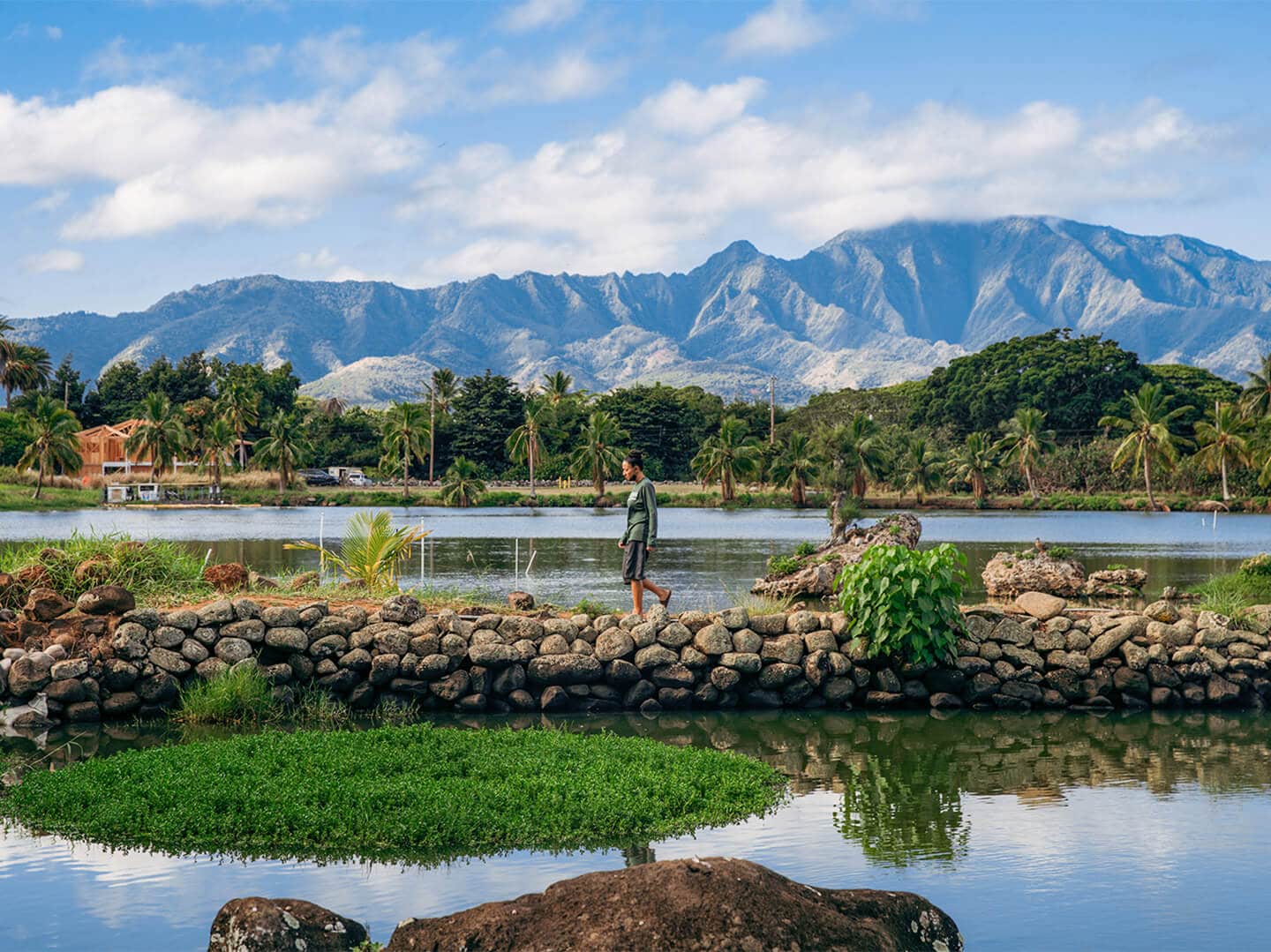
Nature’s Revival
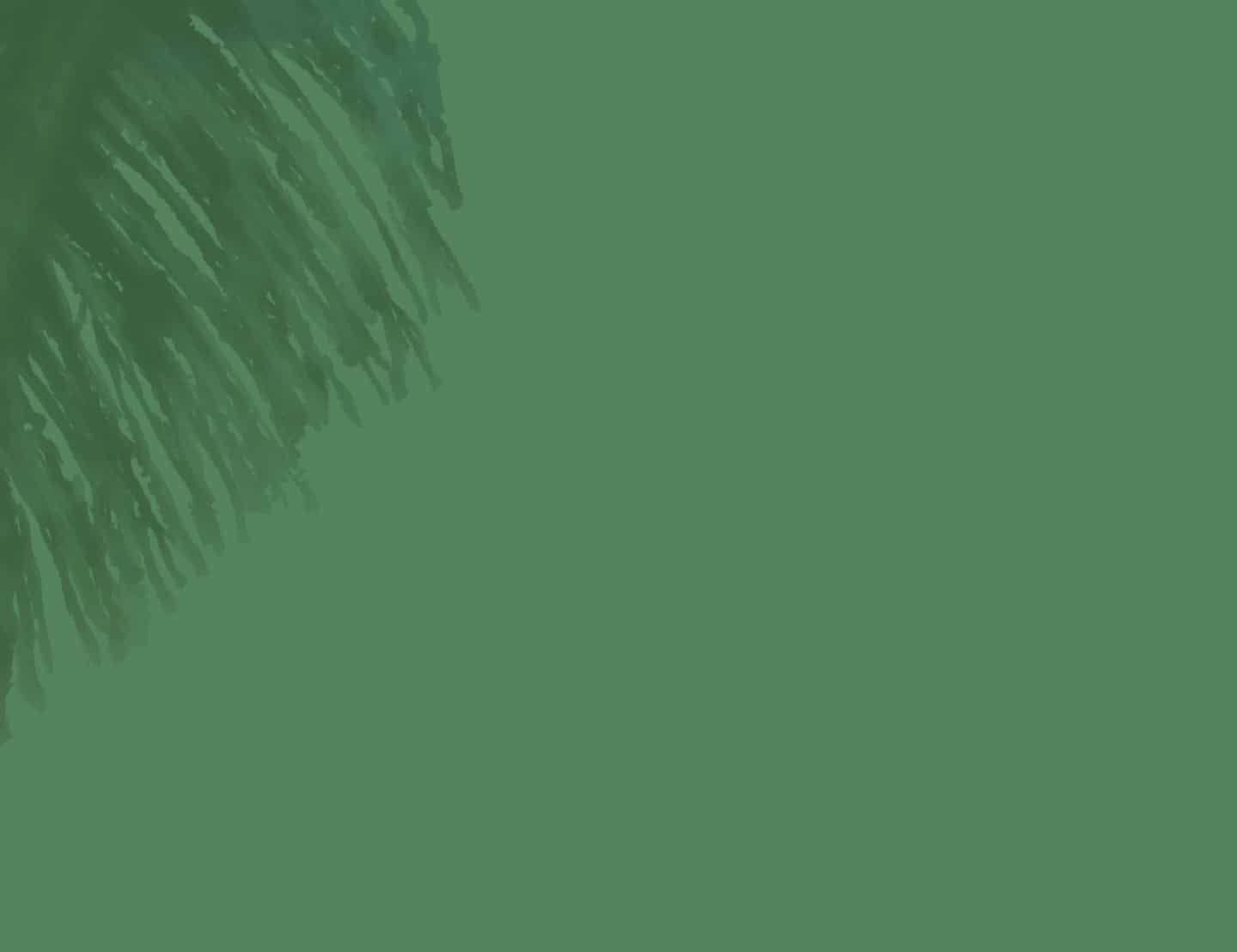
AN UNEXPECTED
REVIVAL

On a macro scale, 2020 proved a jarring reset for Hawaiʻi. The human cost of the pandemic was devastating, travel came to a halt, social gatherings ceased, and both visitors and residents alike were confined indoors. Nature, however, underwent a rebirth.
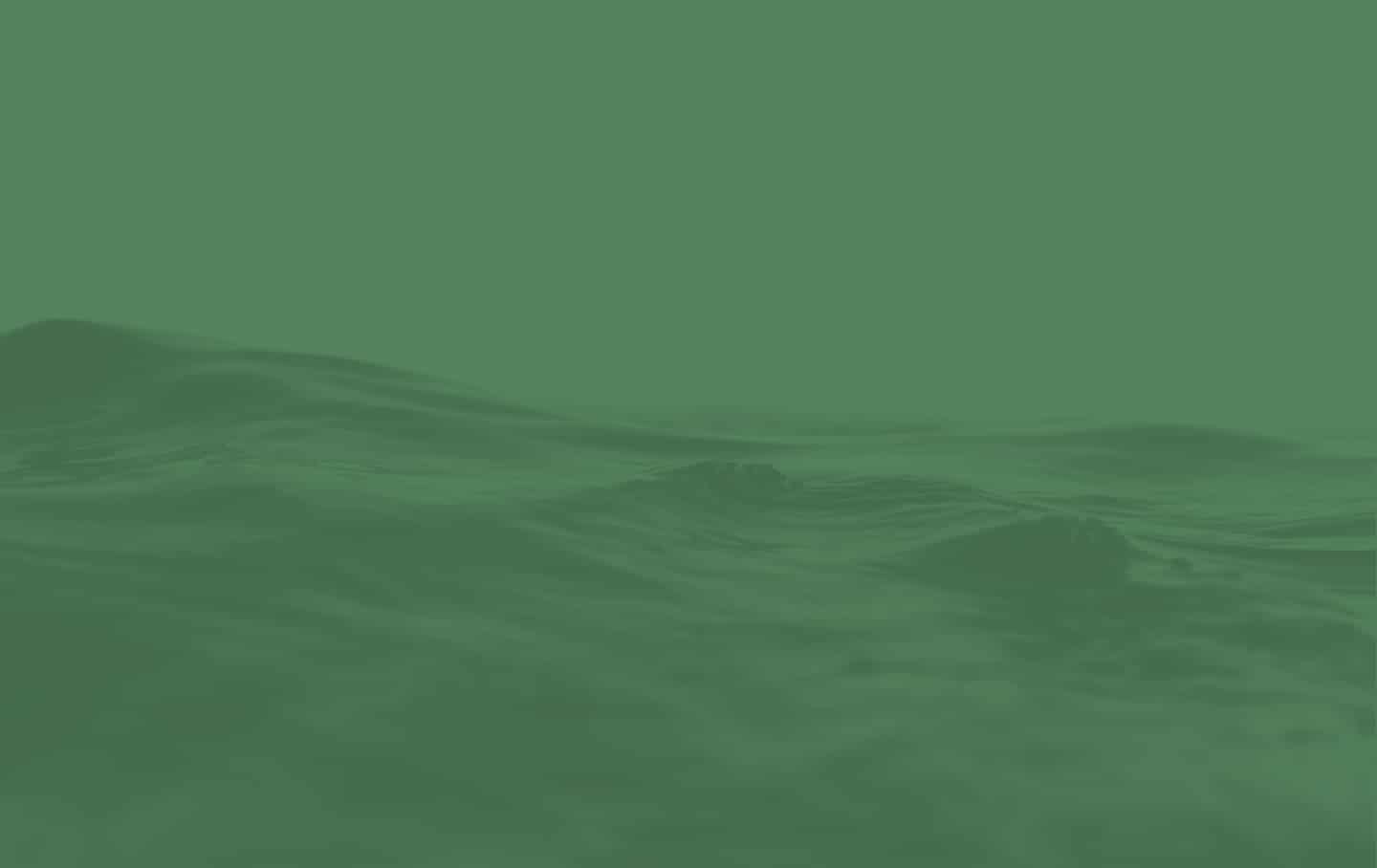
Unburdened by the imposing weight of both physical and carbon footprints, wildlife that once struggled to persevere began to thrive again. Week after week, local and national news reports showcased footage of this ecological regeneration: Crystalline ocean waters and pristine beaches were the clearest and cleanest many locals had seen in their lifetimes; massive fish “bait balls” appeared, drawing sharks ashore to feed freely and undisturbed by boats; and coral reefs, once progressively devoid of marine life, revived all manner of oceanic organisms. The scenes served as a reminder of Hawaiʻi’s true potential when its ecosystem is allowed to simply be. Those days, however, were numbered. As the world began to reopen and travelers returned to the state, the challenge of balancing Hawaiʻi’s need for tourism with environmental protections would renew once again.


In preparation for that moment, industry leaders began reimagining the future of tourism, asking themselves: Without an understanding of Hawaiʻi’s deep and profound connection to the natural world, how can visitors possibly learn to care about it as well? What could a harmonious relationship between locals, visitors and the land actually look like? “Culturally, we do not believe in living off of the land. We believe in living with the land,” Explains Palupe. “This comes from the idea of serving the ʻāina [land] so that it too can thrive and not just survive — and in turn we thrive as kānaka [native Hawaiian people].”
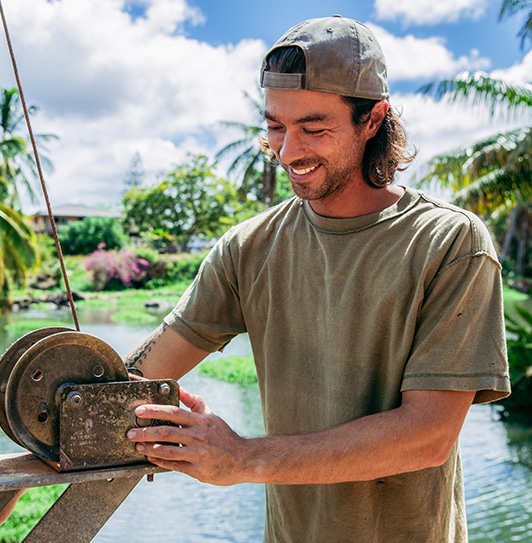

Though Hawaiʻi was declared the 50th state in 1959, its history and culture are rarely acknowledged in current American discourse. Palupe’s father was a fisherman by trade who fished on aku boats and imparted the integral skills of fishing and diving to his family. He was first introduced to the traditional Hawaiian fishpond Paepae o Heʻeia in 2003 at the outset of its revitalization efforts.
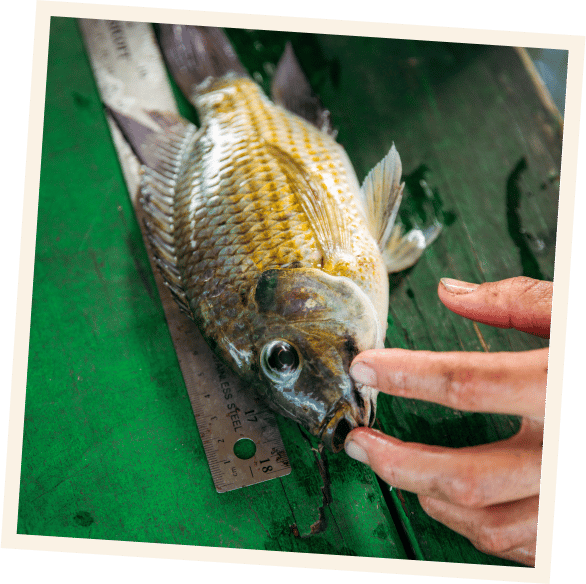
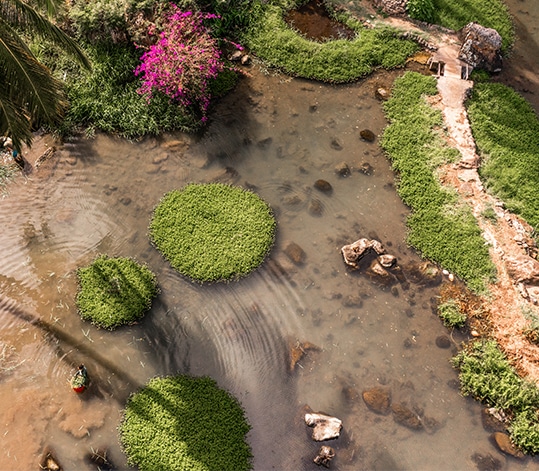

“Most of my background with the fishpond has been through educational opportunities, which helped me understand the ecological side to what [the fishpond] is aiming to achieve.”
Joey Palupe

These efforts aimed to restore the once thriving pond to its ancestral kuleana (responsibility) by utilizing the fishpond tradition as a blueprint for sustainability.
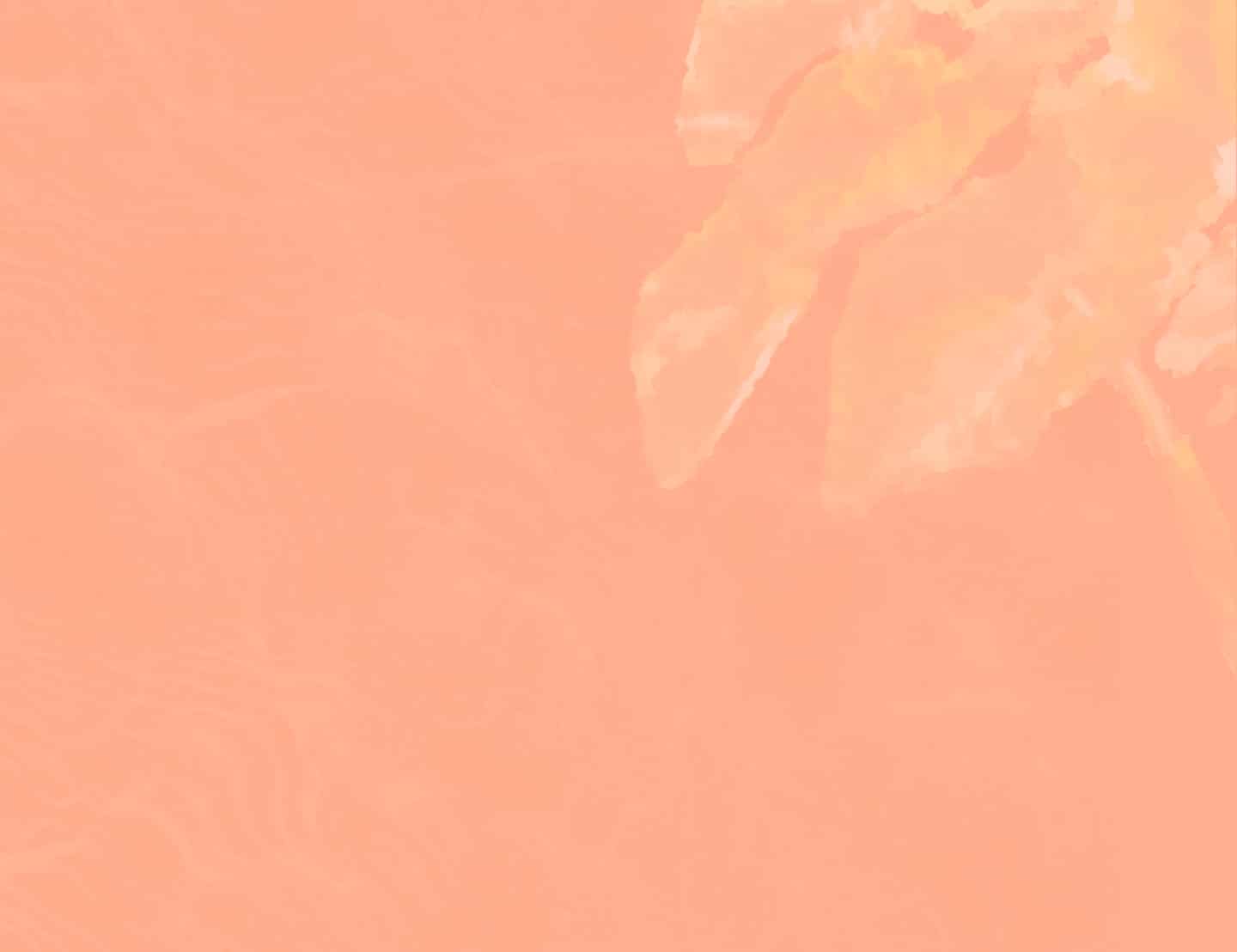
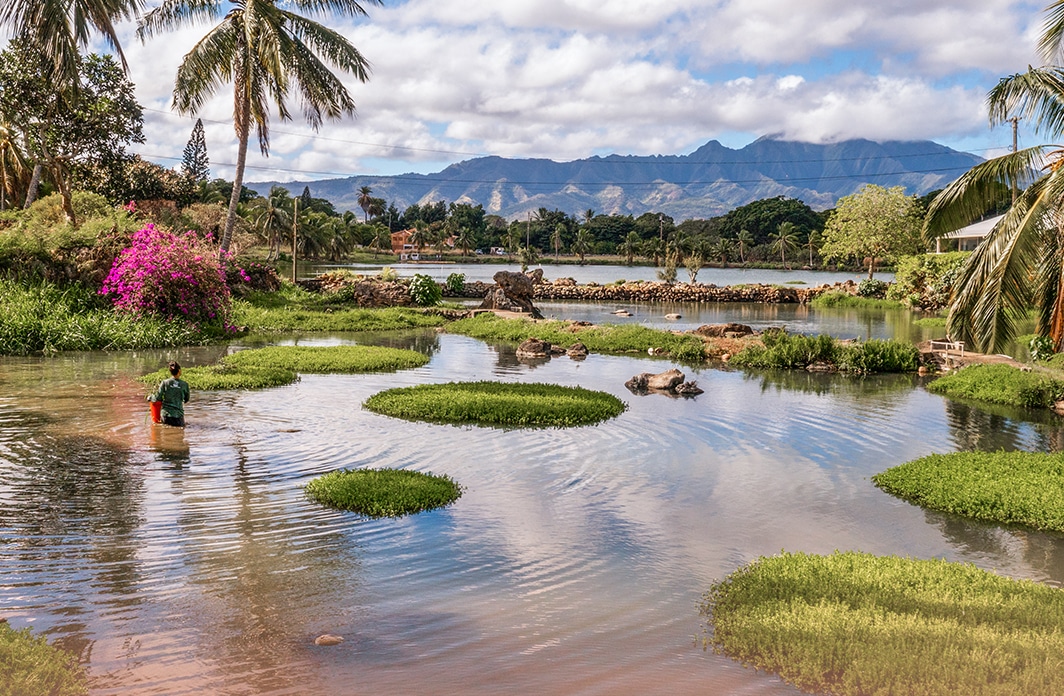
AN ANCIENT
TRADITION

Native Hawaiian fishponds are an advanced form of aquaculture that served as community resources within each district, providing mea kanu (plants), iʻa (fish) and other aquatic life to feed residents. “Hawaiʻi’s ecosystems are very delicate and unique, much of which has to do with our proximity to the equator,” Palupe explains.

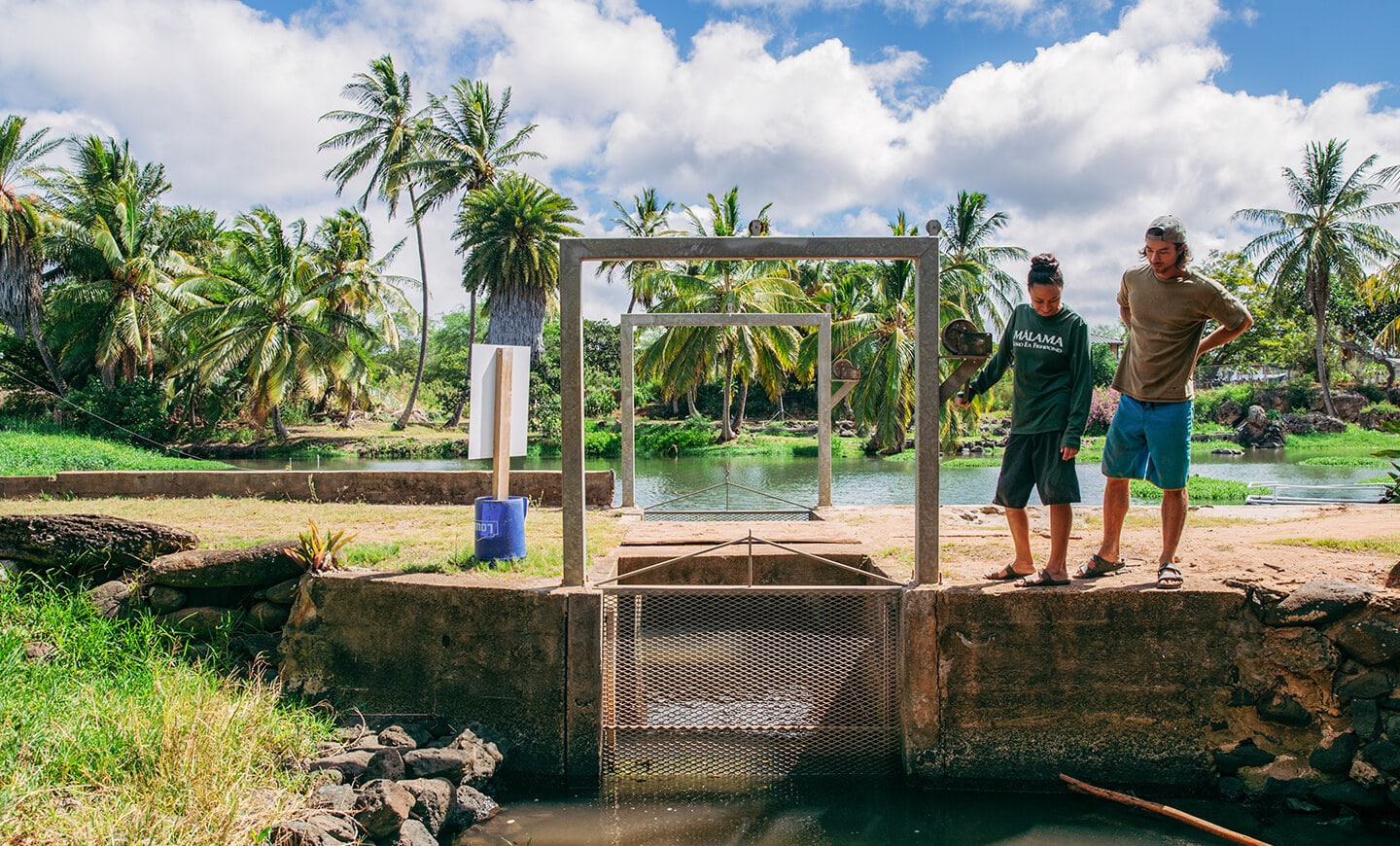

“As we pull closer to the equator, our tide levels change at different rates than the rest of the world. Fishponds help our reef systems and coastal ocean life to adapt to the tide-level changes at a slower rate. These estuary ponds also help to slow the speed of freshwater runoff from entering our reef systems.”
Joey Palupe

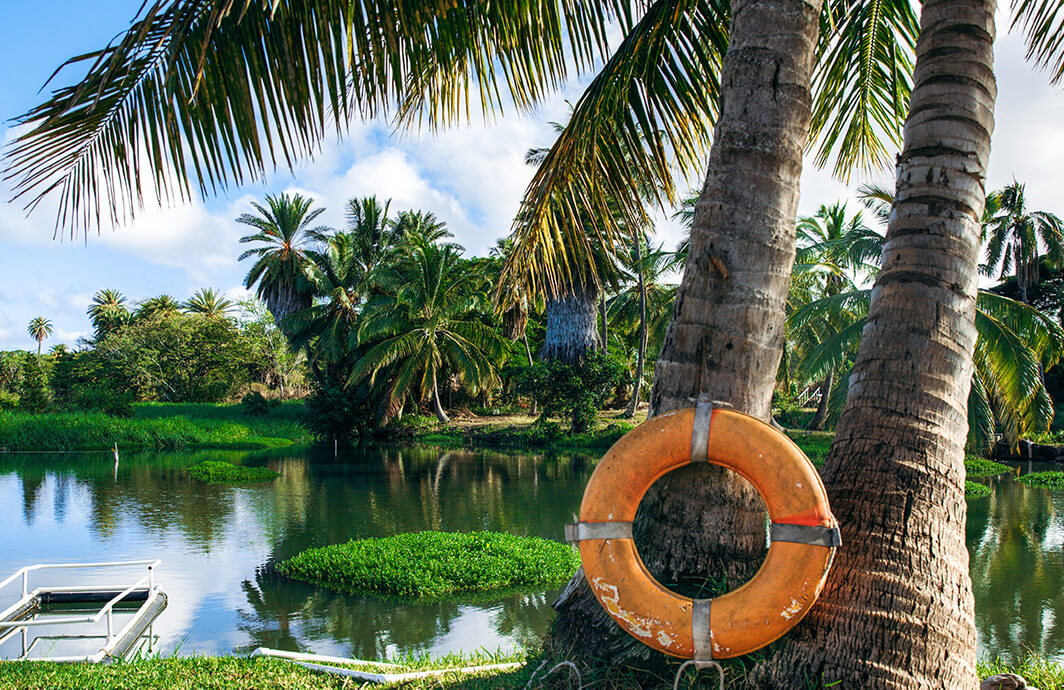

The ponds’ unique design is a symbol of Hawaiian ingenuity — each is enclosed by an extensive kuapā (fishpond wall) steeped in ancestral knowledge. The kuapā employs a dry-stack wall method known as uhau humu pōhaku , meaning the wall is kept upright and intact without the use of mortar. Noted as the essence of Hawaiian fishponds, the kuapā relies solely on the careful placement of volcanic rock, coral and foundation stones to protect against wind and waves.
The porous volcanic rock wall welcomes seawater into the pond, while the mākāhā (sluice gates) made of lashed tree branches allow juvenile fish in to nourish the pond’s aquatic life. Still, Hawaii’s ancient fishpond traditions are handed many difficulties. More than 300 loko iʻa once flourished across the state, yet only 40 are in the process of being restored or maintained. Today, the ponds face a historic rise in “king tides,” an acute increase in ambient temperature, and a decrease in nourishing freshwater sources from the mountain, all of which threaten the delicate balance of the loko iʻa ecosystems. On top of this, the pandemic led to a loss of thousands of annual volunteers.
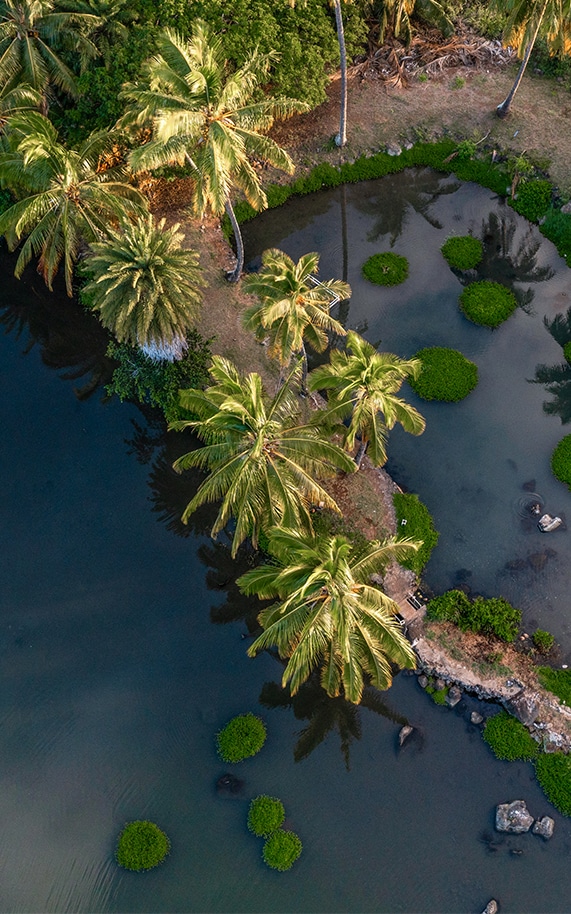

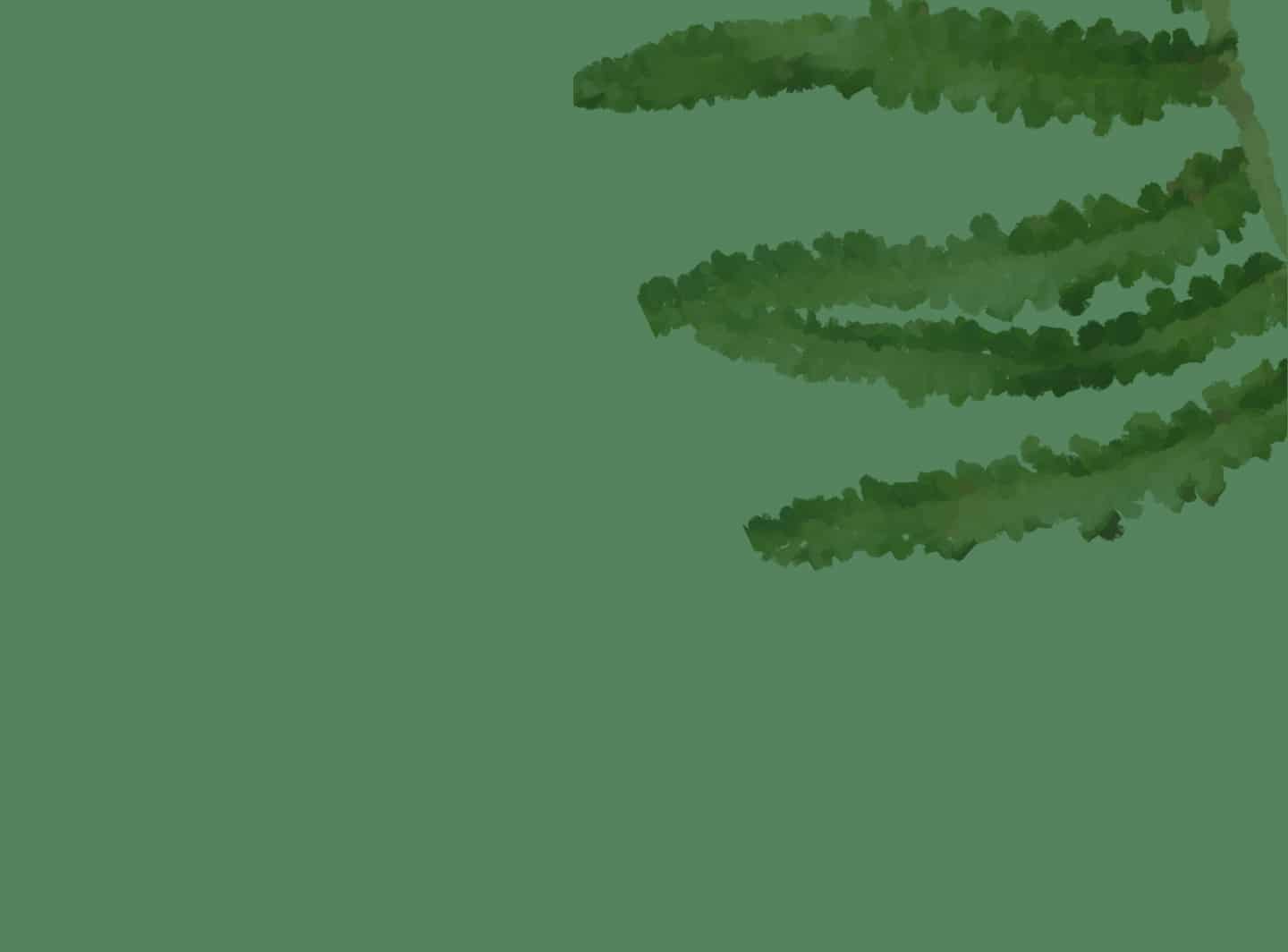
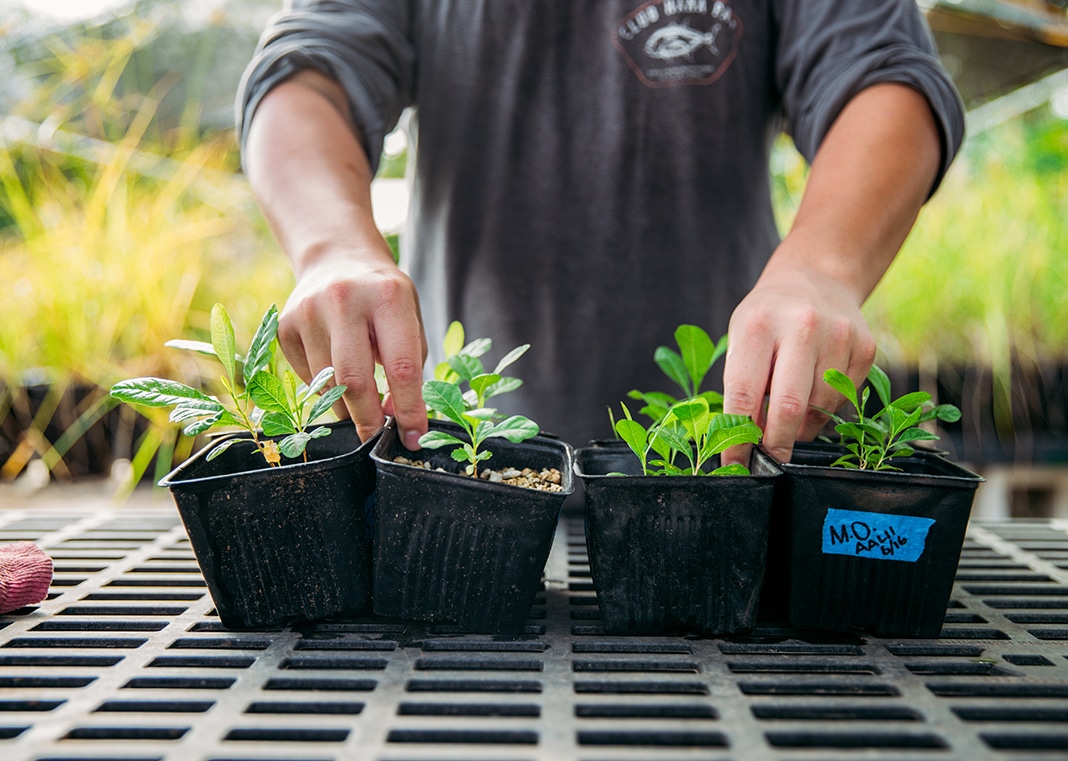
HELPING HANDS

One spot currently undergoing restoration is Loko Ea, a 400-year-old fishpond located in Haleʻiwa on the North Shore of Oʻahu, where the ocean meets the Ukoʻa Stream, ensuring a balance of fresh and salt waters essential to their wildlife.
Loko Ea offers visitors educational opportunities, internships, aquaculture programs and volunteer workdays through their nonprofit, Mālama Loko Ea.

“We offer three or four different types of ʻāina activities, such as weeding, removing invasive species, propagation, out-planting native plants and general maintenance of various difficulties. This allows for volunteers of all ages to participate.”
RAE DECOITO

Through hands-on experience, volunteers feel a greater connection to the land and community. By working together to restore these ancient resources, stewards hope to instill cultural values in their volunteers.
“Teaching the traditional resource management operations of our ancestors can help visitors understand the connection between mauka and makai,” says DeCoito. “It demonstrates how brilliant the fishpond design is and how much we can still learn from these practices.”
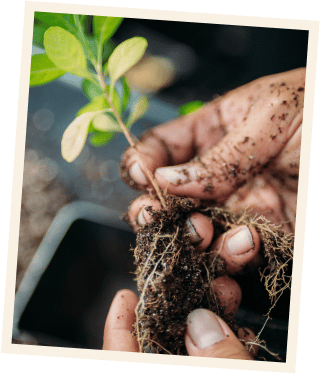


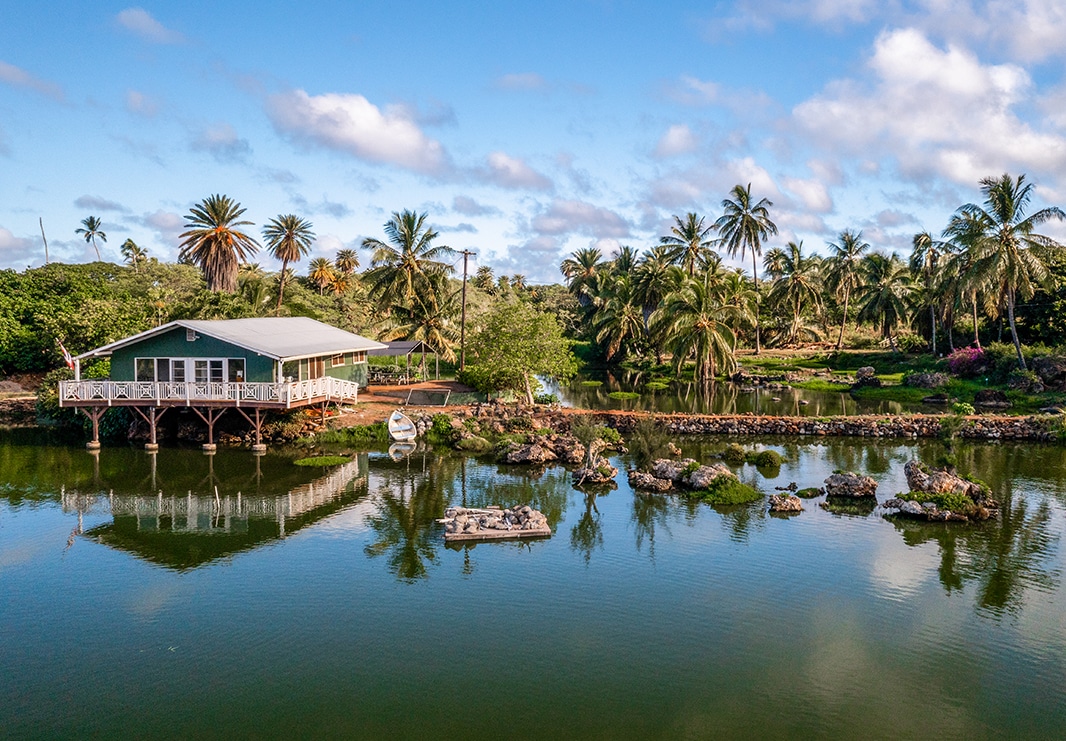
Sustainable Food
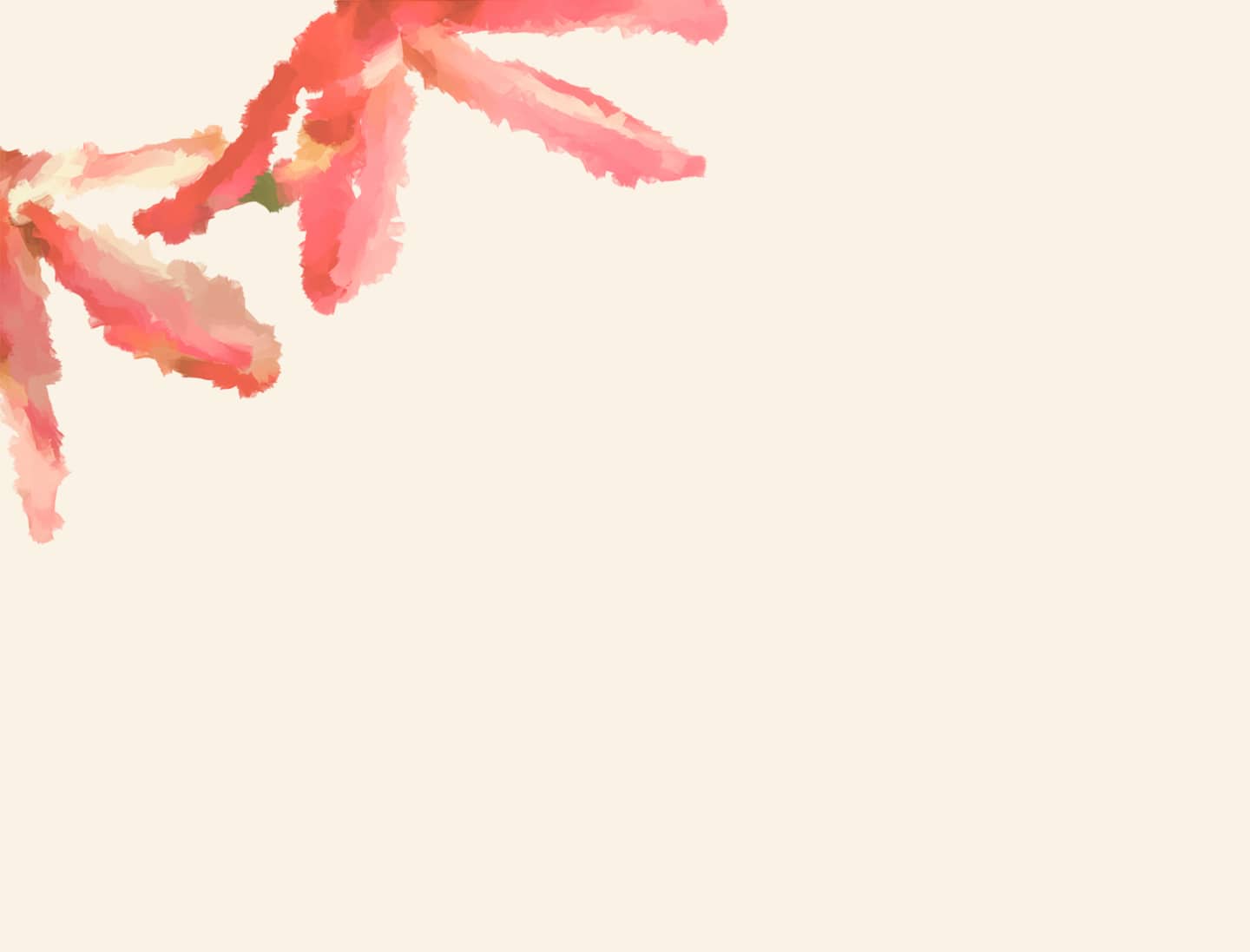
SUSTAINABLE
FOOD SOURCING

Instilling those ancestral values in kamaʻāina (locals) and visitors alike is paramount to addressing issues of food insecurity in Hawaiʻi. In order to do so, organizations are turning to native wisdom — like that inherent in fishponds — for sustainable solutions.
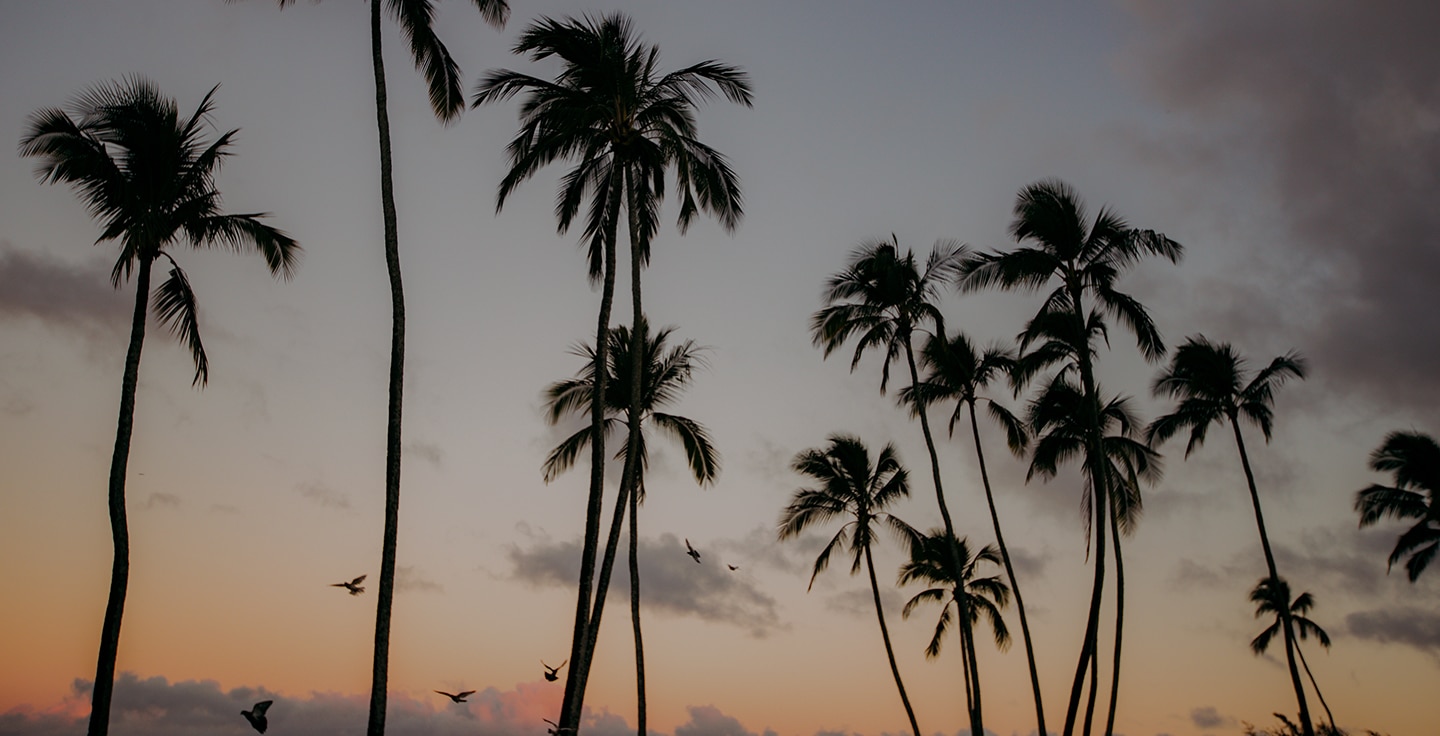
“Food sustainability is such an integral part of Hawaiʻi, both culturally and physically. Restoring a significant food source back into the community is a huge step to creating food sustainability, especially for this ahupuaʻa.”
RAE DECOITO

Cultivating local food sources throughout the state is one of the many ways Hawaiʻi can move away from reliance on outside exports and instead nourish residents one district at a time.
The hope is that the native fishponds’ restoration will regenerate their aquatic life to support the standards of larger scale food production.
These social and environmental issues Hawaiʻi faces stand in stark contrast to the tropical utopia often romanticized in mainstream media.
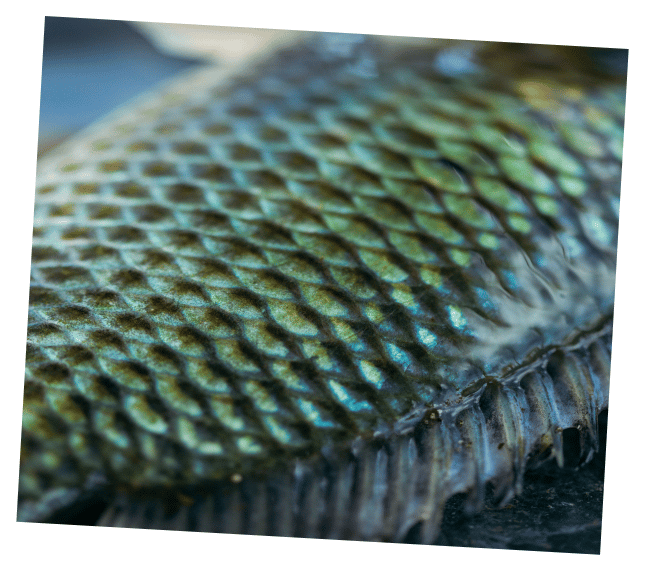

But for those immersed in native wisdom, the spiritual connections that Hawaiian values impart are truly transformative. The Mālama Loko Ea Foundation stresses the philosophy of mālama ʻāina (to nurture the land) as a movement toward sustainable living not just as important, but as a necessity. “Working harmoniously with the ʻāina is what it takes to maintain and restore historic and culturally significant resources on our island,” notes DeCoito. “Together we can learn more about these special places and ensure they exist for future generations.”
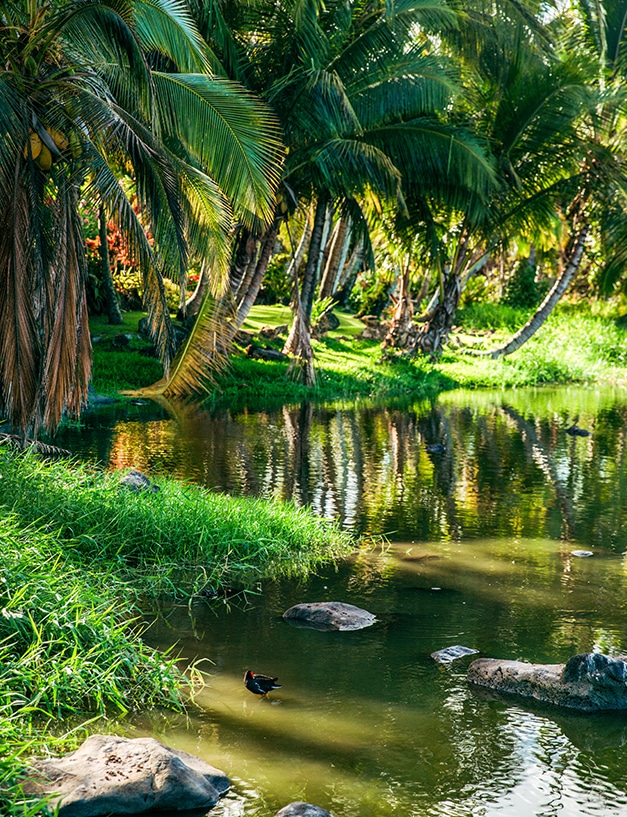

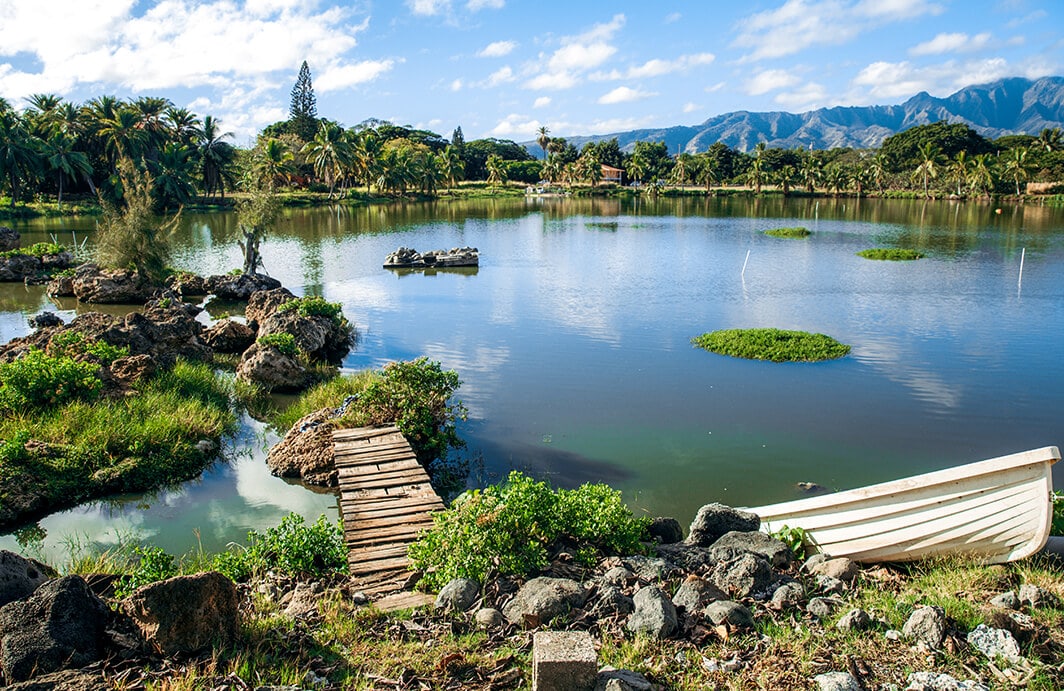
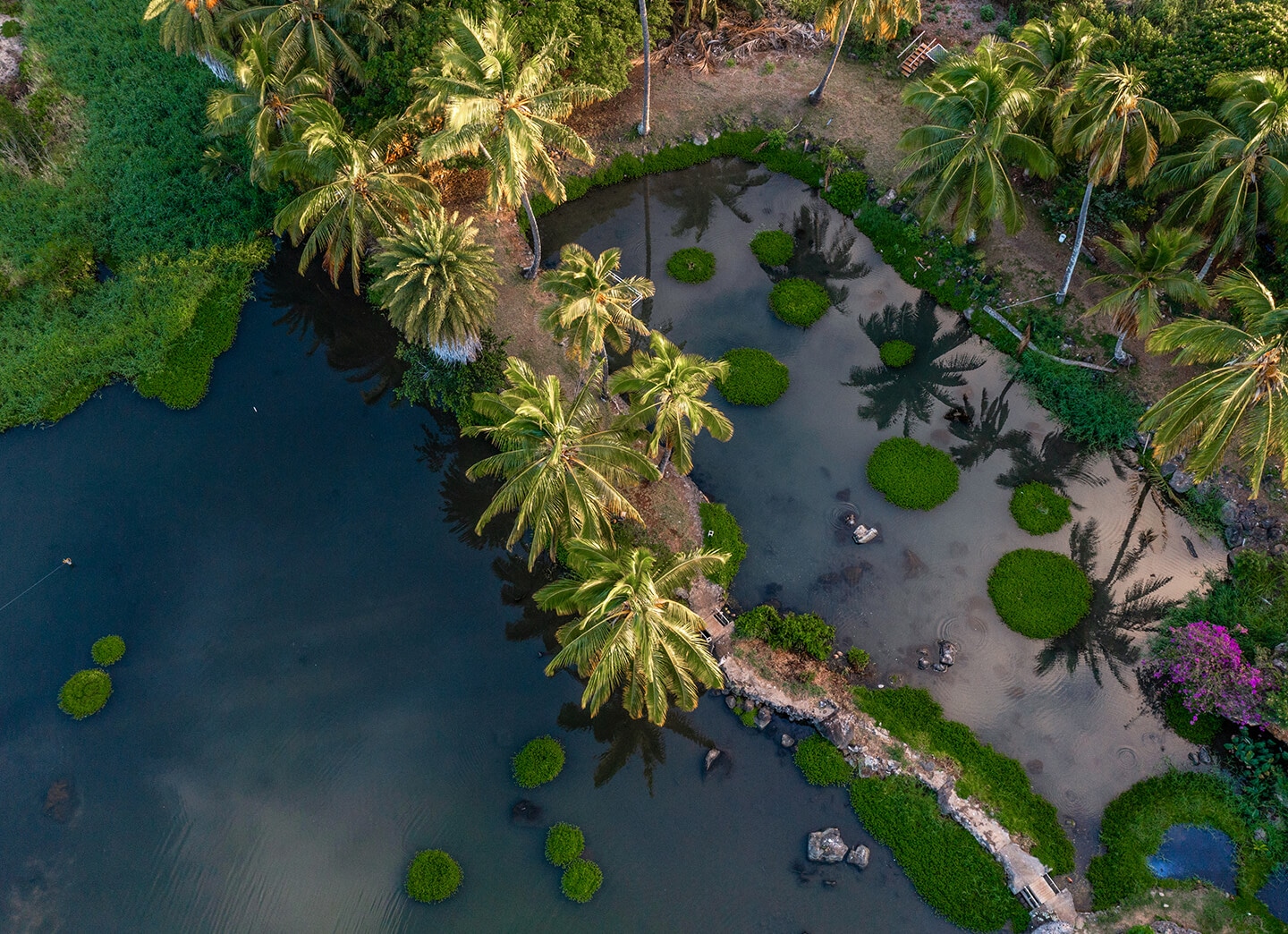
Protecting Tradition
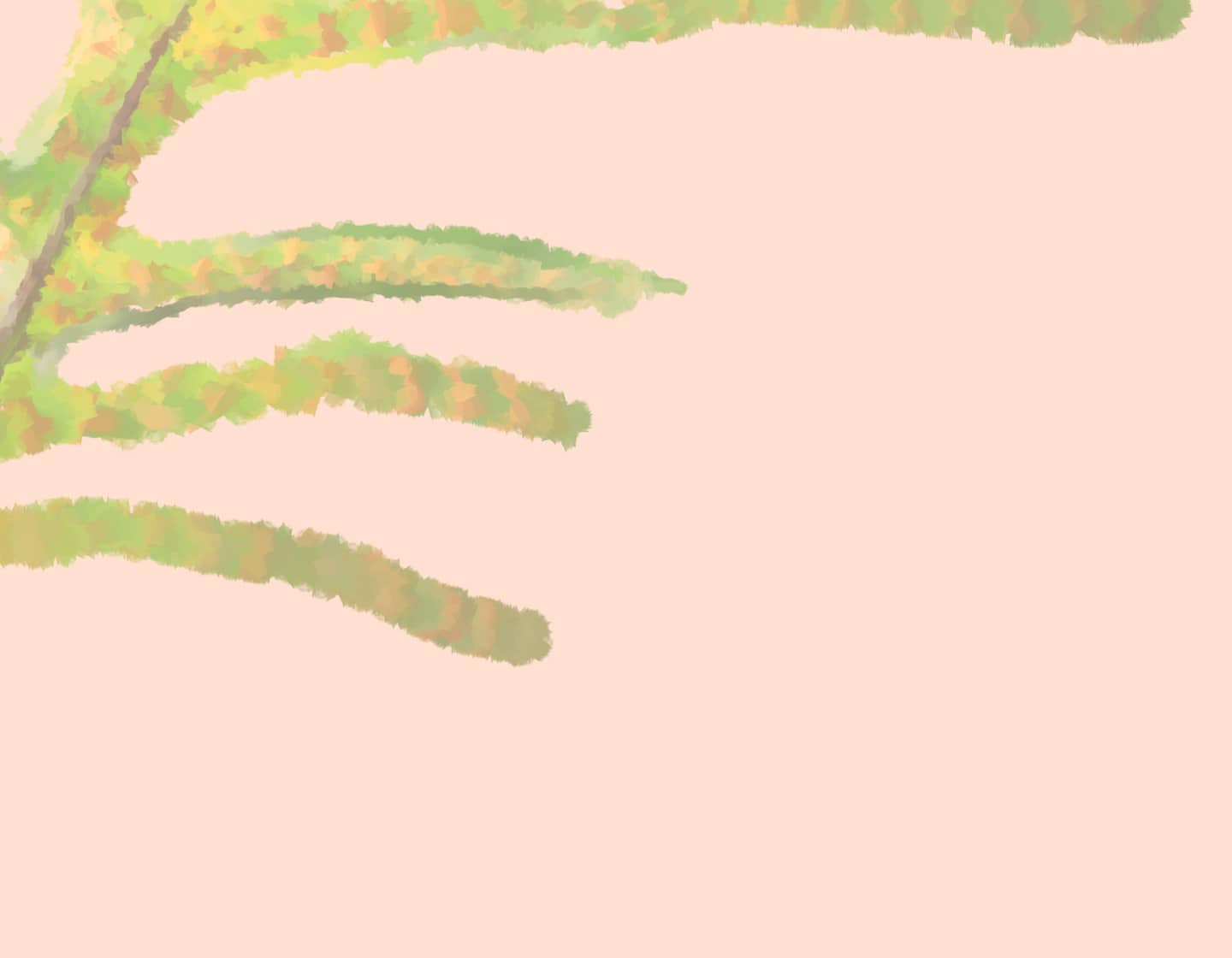
KEEPERS OF
TRADITION

For Hawaiʻi residents, ecotourism answers the call for a responsible form of tourism built upon a foundation of respect. While visiting cultural sites like Loko Ea is a great first step, in order to gain true insight and understanding from these sacred spaces, the investment begins upon entry.
For stewards of the land, maintaining and restoring these cultural and environmental resources is much more than just a job for them. “Visitors can take what they learn from Loko Ea and apply it to their community, wherever they live,” says DeCoito.
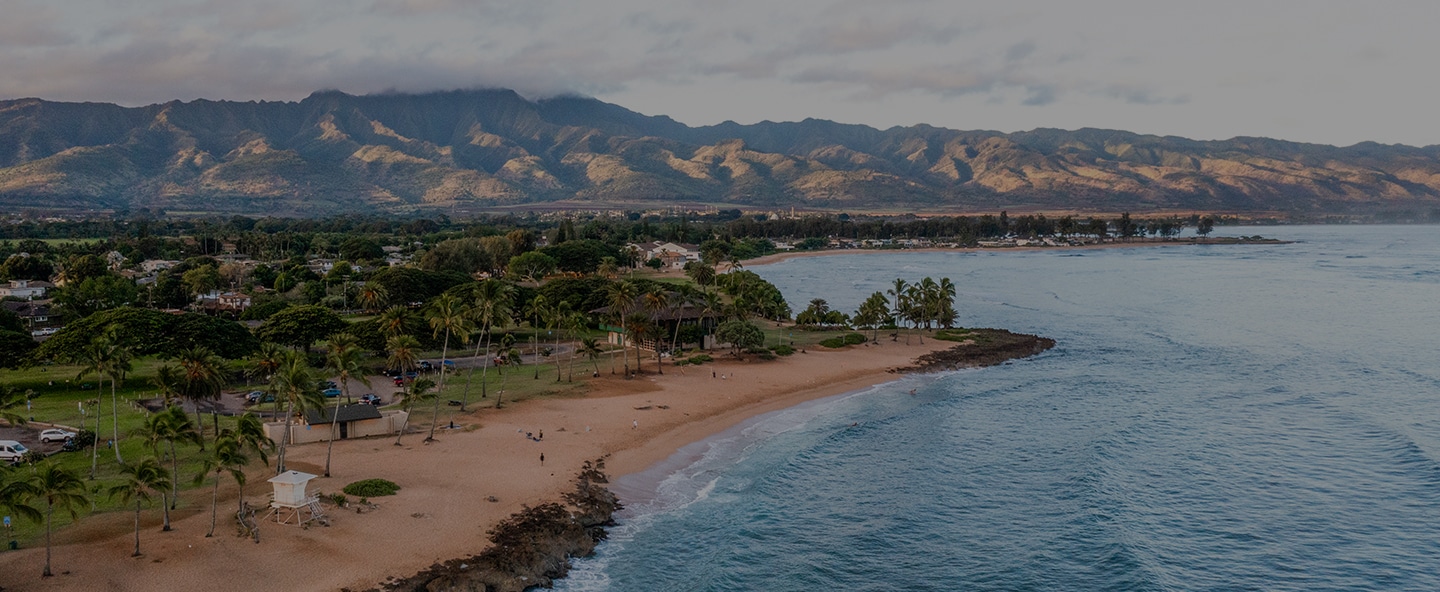
“That is the importance of the work we do. We are teaching the community how to get back to a sustainable way of living.”
RAE DECOITO

By offering visitors the chance to experience Hawaiʻi as being steeped in rich, spiritual practices, kindred connections can flourish and knowledge can be shared.
After the immense challenges of 2020 and the influx of visitors seen throughout 2021, voluntourism opportunities such as these hope to promote a new wave of responsible, regenerative tourism to encourage responsible travel. “The emotional validation that stems from coming to a place you have contributed to in a positive way is truly invaluable,” says Palupe. “If you love the Hawaiʻi that you visit today, you should care to participate in the work it takes to maintain it or to make it even better.”
